Samsung S85F with a QD-OLED panel can be surprising – and surprisingly positively so. Before the tests, we didn't think that in the case of televisions, which are often referred to in the context of "panel lottery," one could come across something beneficial for users. Yet, in this case, especially in the 55-inch version, it fully succeeded. The QD-OLED panel, as is fitting for organic technology, offers nearly perfect black and contrast in cinematic conditions. However, the difference lies in the way colors are reproduced – here it is simply outstanding. The color gamut coverage is impressive, and after slight calibration, the colors become almost exemplary. Motion smoothness is equally high. The 120 Hz panel handles both sports and action movies exceptionally well. And if someone plans to connect a console to the S85F, they will receive a full set of advantages: low input lag, variable refresh rate, Game Bar, and full HDMI 2.1 support. In daily use, we were assisted by the Tizen system – closed, but incredibly refined. It responds quickly, offers a rich selection of applications, and features such as AirPlay and voice control make it hard to find something more complete in this category. Indeed, the S85F is not without its flaws. However, the balance of advantages and disadvantages is exceptionally favorable here. One could even get the impression that this is one of the best televisions in its price segment.
- Matching (Score)
- Our verdict
- TV appearance
- Where to buy
- Contrast and black detail
- HDR effect quality
- Factory color reproduction
- Color reproduction after calibration
- Smoothness of tonal transitions
- Image scaling and smoothness of tonal transitions
- Blur and motion smoothness
- Console compatibility and gaming features
- Input lag
- Compatibility with PC
- Viewing angles
- TV efficiency during daytime
- Details about the matrix
- TV features
- Apps
- Playing files from USB
- Sound
Samsung OLED S85F (QD-OLED) vs Samsung The Frame Pro
Direct compare
Check the best price offer:
Samsung OLED S85F (QD-OLED)Check the best price offer:
Samsung The Frame ProS85F / FAE / FAU
The Frame Pro / LS03FW
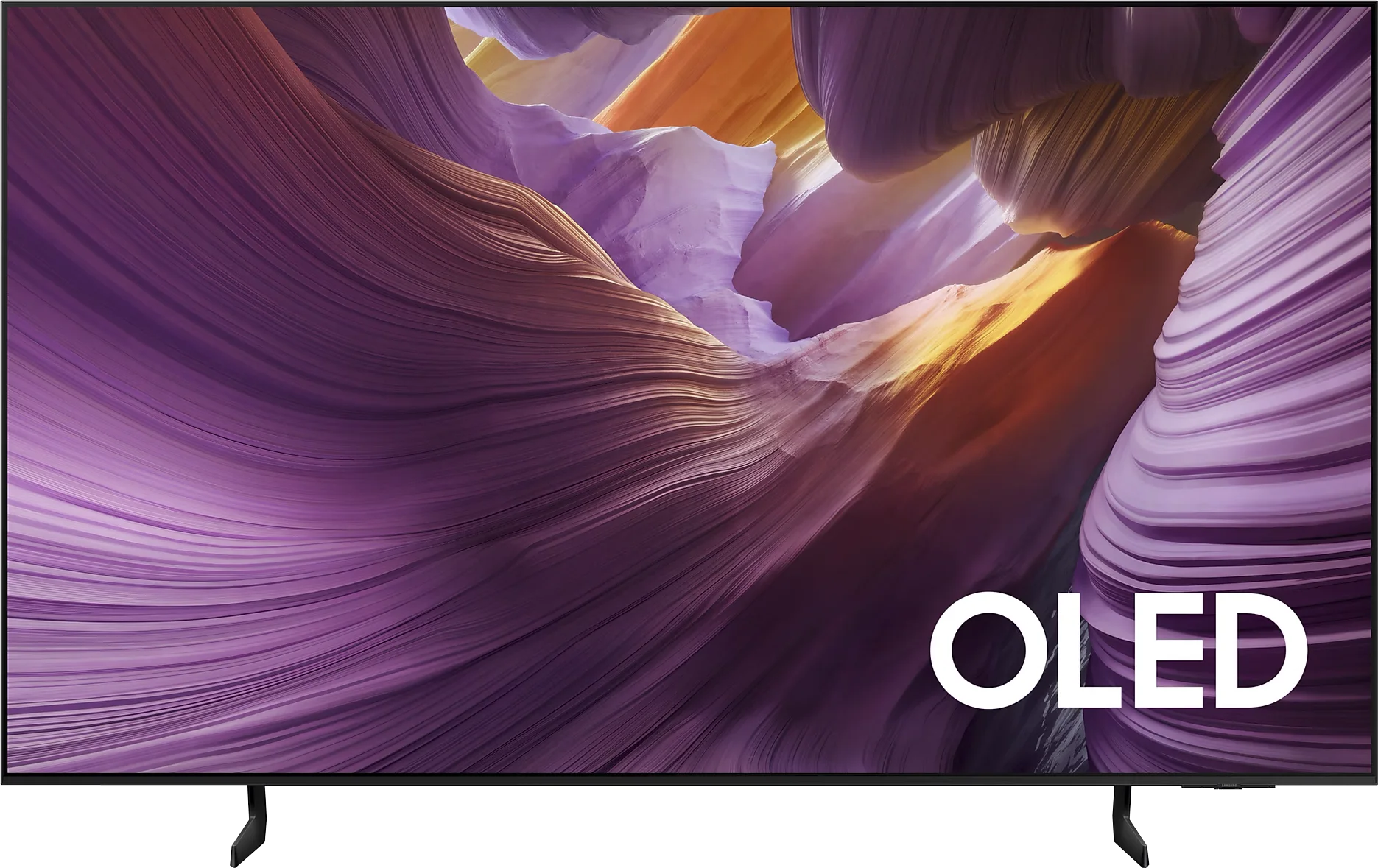

Panel type: QD-OLED
Resolution: 3840x2160
System: Tizen
Model year: 2025
Complete the survey to find out the result

Panel type: LCD VA
Resolution: 3840x2160
System: Tizen
Model year: 2025
Complete the survey to find out the result

Overall rating
8.0
7.3
Movies and series in UHD quality
8.3
6.8
Classic TV, YouTube
9.0
6.6
Sports broadcasts (TV and apps)
8.8
6.8
Gaming on console
9.3
8.6
TV as a computer monitor
7.6
8.4
Watching in bright light
5.1
7.0
Utility functions
7.3
7.7
Apps
8.7
8.7
Sound quality
7.2
6.4
Complete the survey to find out what fits your preferences
Advantages
Amazing black and contrast
Incredible color palette coverage thanks to the QD-OLED panel
Great picture in SDR and HDR content
High color fidelity after calibration
Very good image smoothness – 120 Hz OLED panel
Rich set of features for gamers: VRR, Game Bar, low input lag
4 HDMI 2.1 ports with full bandwidth of 48 Gbps
Advanced and smoothly operating Tizen system
Solar Remote with multiple capabilities
Premium design – symmetrical frame, interchangeable frame customization, true image effect on the wall
Wireless One Connect module – no visible cables by the TV, easier space arrangement
Matte screen coating – no reflections even in bright rooms
High brightness ratio – up to 900 nits
Wide color gamut – QLED
Smooth tonal transitions, practically no banding
High motion fluidity – 144 Hz panel
Gaming features – VRR, ALLM, 144 Hz, Game Bar, low input lag (wired)
Tizen system – fast, intuitive, with a full suite of applications and support for AirPlay and voice assistant
Art Store – unique feature, TV as a digital picture frame
Mount included
Disadvantages
No USB recording function and PiP
No Dolby Vision
Slight cherry black under very strong external light (not visible during viewing in cinematic conditions)
No HGiG function*
* This function disappeared with the software update 1110.7 – we are monitoring this situation continuously.
It's hard to call it a true Mini-LED – edge lighting
Poor viewing angles (they could be better for improved wall image quality)
No HGiG* feature
Flat sound, little bass. A soundbar will definitely come in handy
Issues with font legibility and significant lag (input lag) when using the wireless One Connect module.
*The HGiG feature disappeared with the latest TV update. We are monitoring the situation, and if anything changes in this regard, we will let you know.
Our verdict
Samsung The Frame Pro 2025 is a television that brings a breath of freshness to the lifestyle model segment. Its design takes center stage – a symmetrical frame, the ability to easily change decorative frames, and above all, the image effect on the wall thanks to the matte coating and special mount. In everyday use, it makes a great impression, and the Art Store feature combined with the high brightness of the screen means that the television works well not only as a display for movies and series but also as a decorative element in interior design. It is also hard not to appreciate the gadget-like addition of the wireless One Connect module – the ability to hide the box with ports anywhere in the living room provides significant design flexibility. In terms of image quality, The Frame Pro holds up quite well. Brightness levels of up to 900 nits in peak scenes allow for enjoyment of HDR effects even in brightly lit rooms, while the VA panel ensures stable and solid contrast. On the other hand, there are quite a few question marks. First and foremost – the naming. The designation "Pro" and the Mini-LED suffix suggest that we are dealing with an advanced local dimming system. However, in the 65-inch variant, we counted only 24 zones, all located at the bottom edge of the screen. You probably already know the effect after reading this review. Black levels and contrast are acceptable, but far from what Mini-LED televisions with full, dense backlighting provide. The issue of the wireless module also raises mixed feelings. While it indeed performs decently for connecting an amplifier or decoder, gamers and PC users will quickly discover that direct connection to the television via MICRO-HDMI is a necessity. Otherwise, they must contend with high input lag and worse font readability. Therefore, it is difficult to truly call The Frame Pro "Pro" in a strictly technological sense – it would be more appropriate to say it's "Frame Plus." A great lifestyle television, polished and visually striking, that will successfully fit into a bright, modern living room, but at the same time, it does not reach the level of quality we could expect from a product labeled as Mini-LED. It is a device that will delight with its design and additional features but will leave a slight sense of disappointment for those who expected a true breakthrough in image quality.
TV appearance
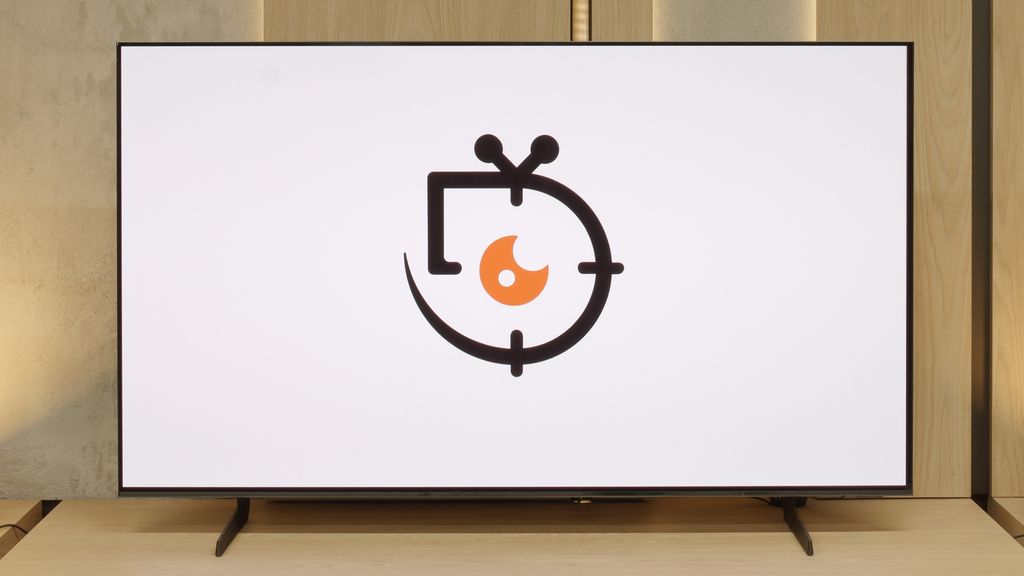
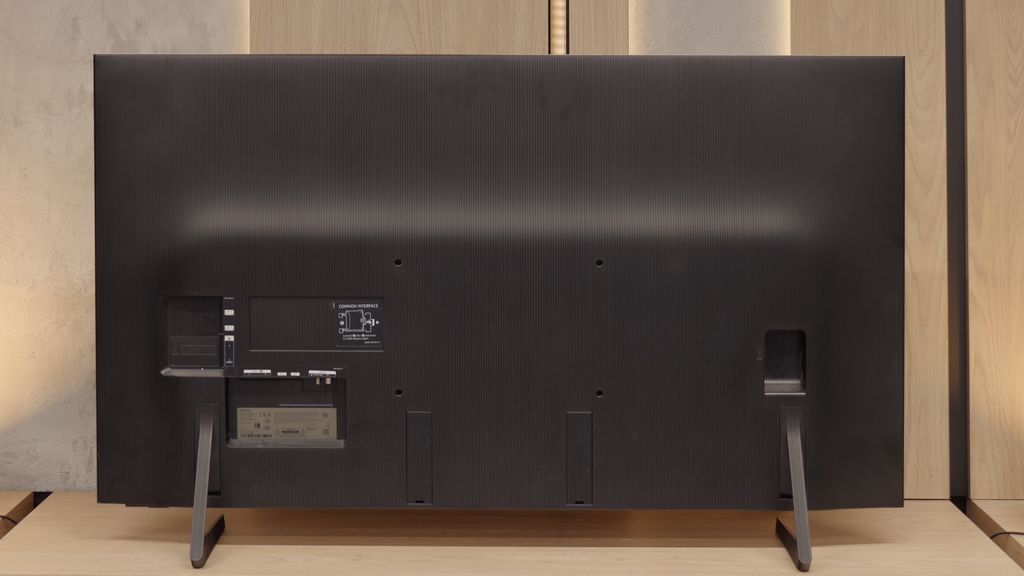
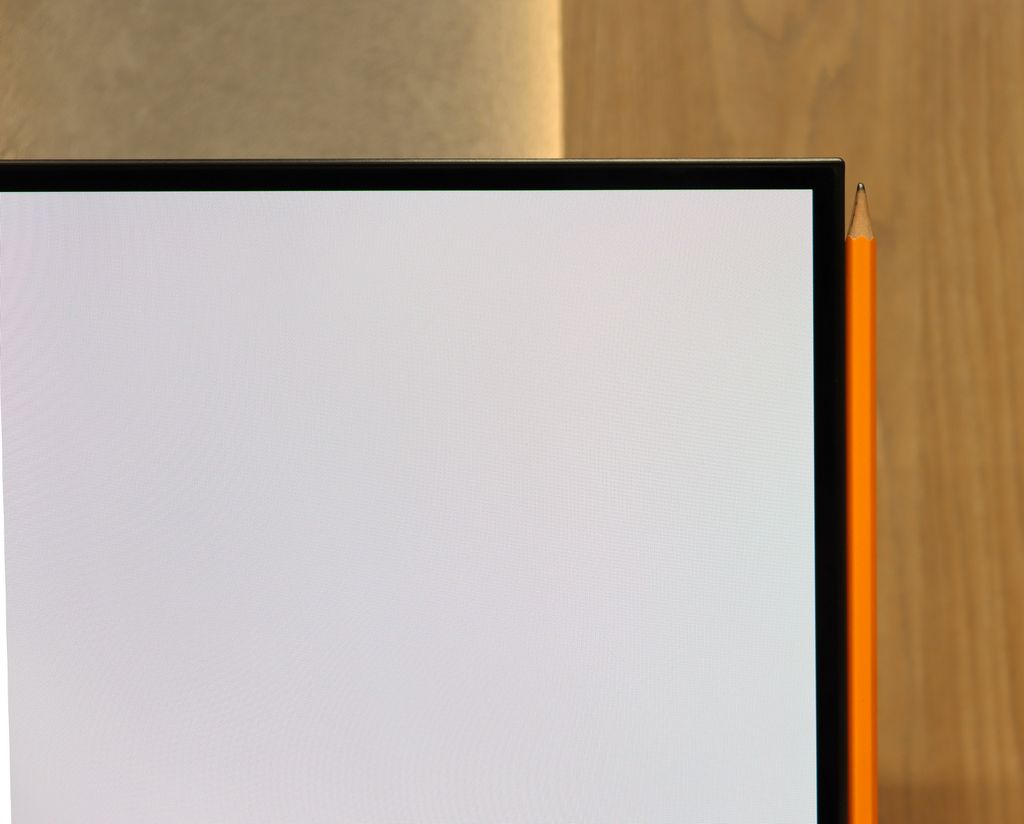
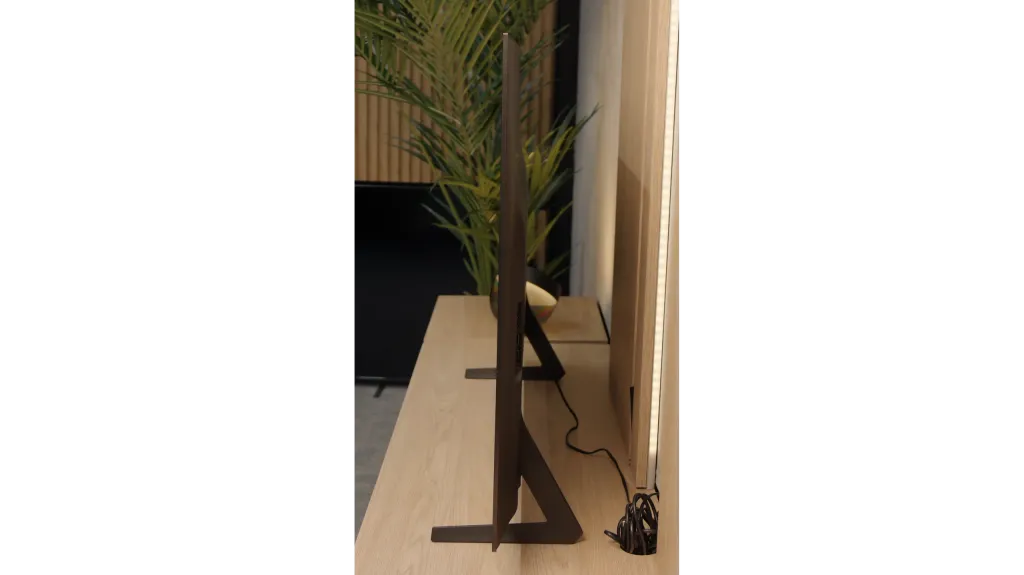
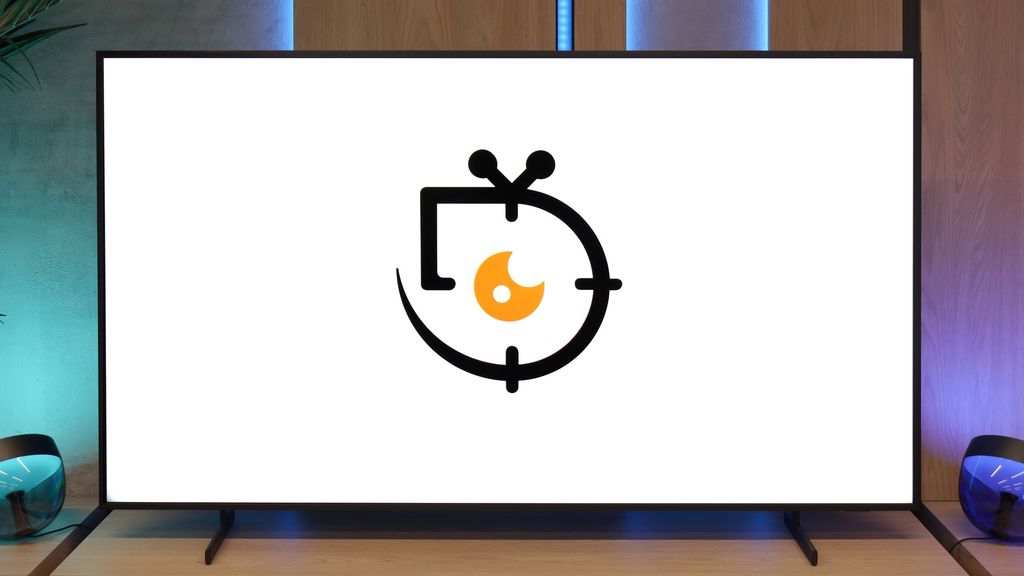
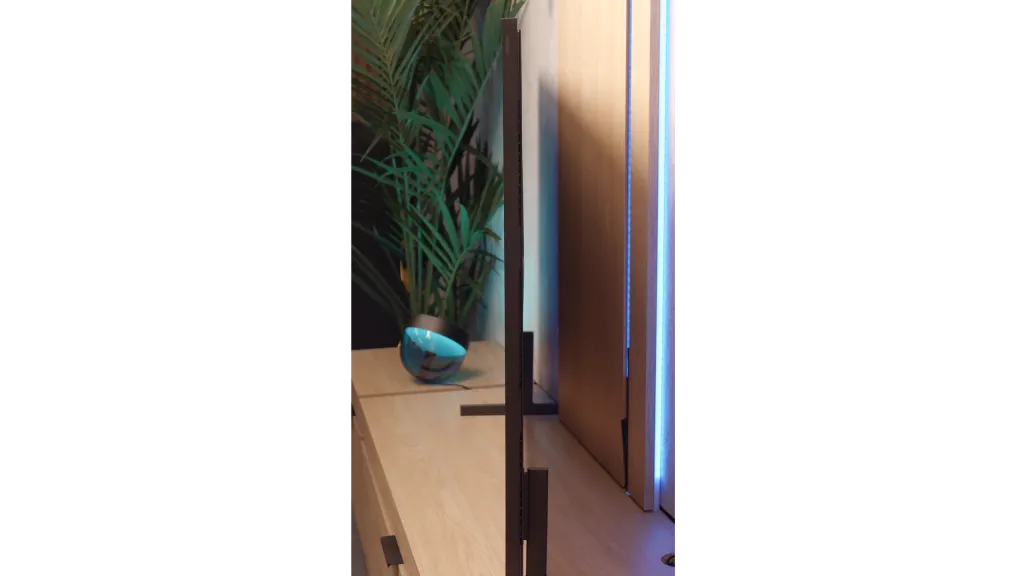
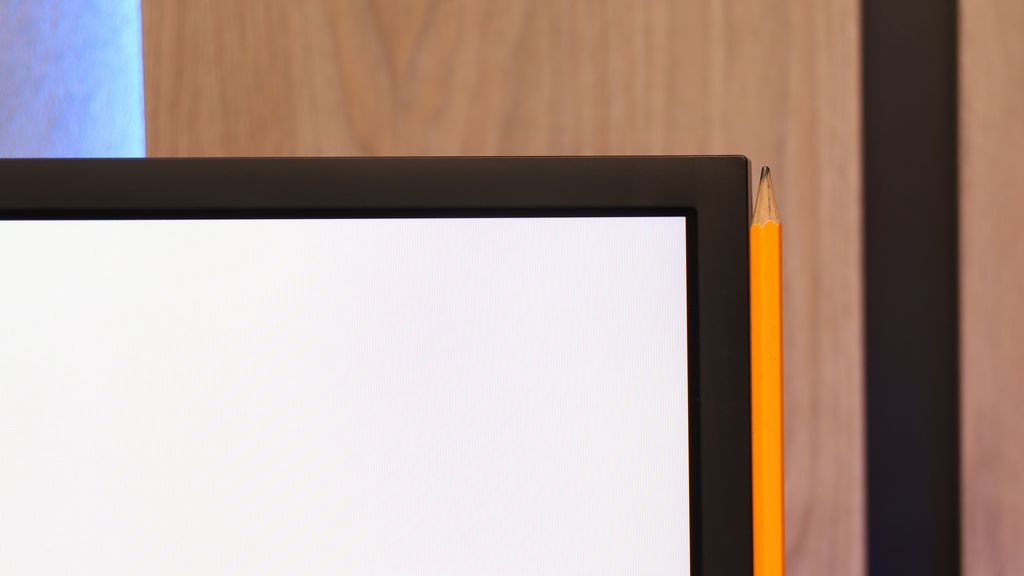
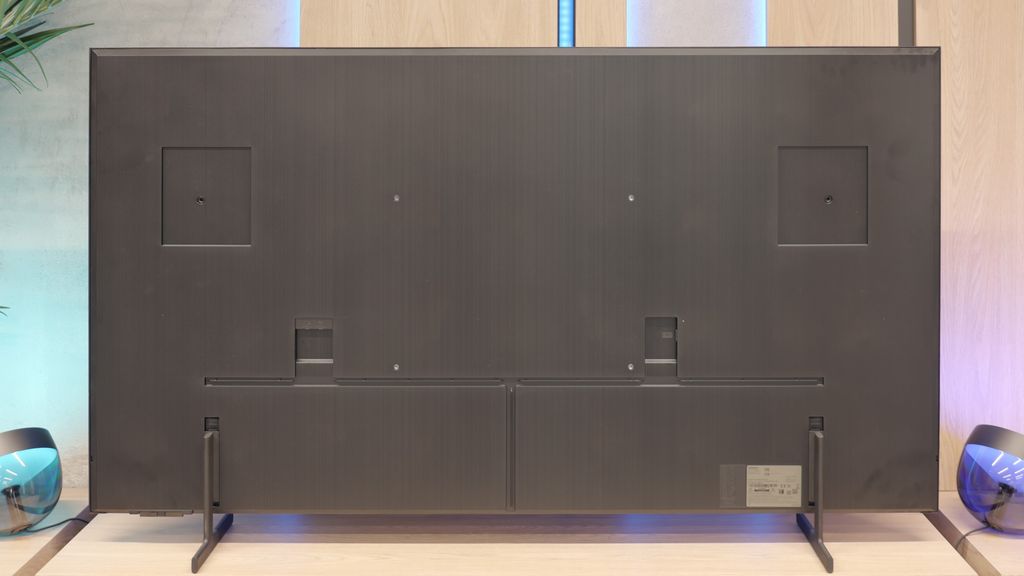
Where to buy
Contrast and black detail
10/10
5.7/10
Local dimming function: Yes, number of zones: 24 (1 x 24)
Contrast:

Result
∞:1

Result
∞:1

Result
∞:1

Result
∞:1

Result
∞:1

Result
6,250:1

Result
5,100:1

Result
4,650:1

Result
4,350:1

Result
4,300:1
Halo effect and black detail visibility:
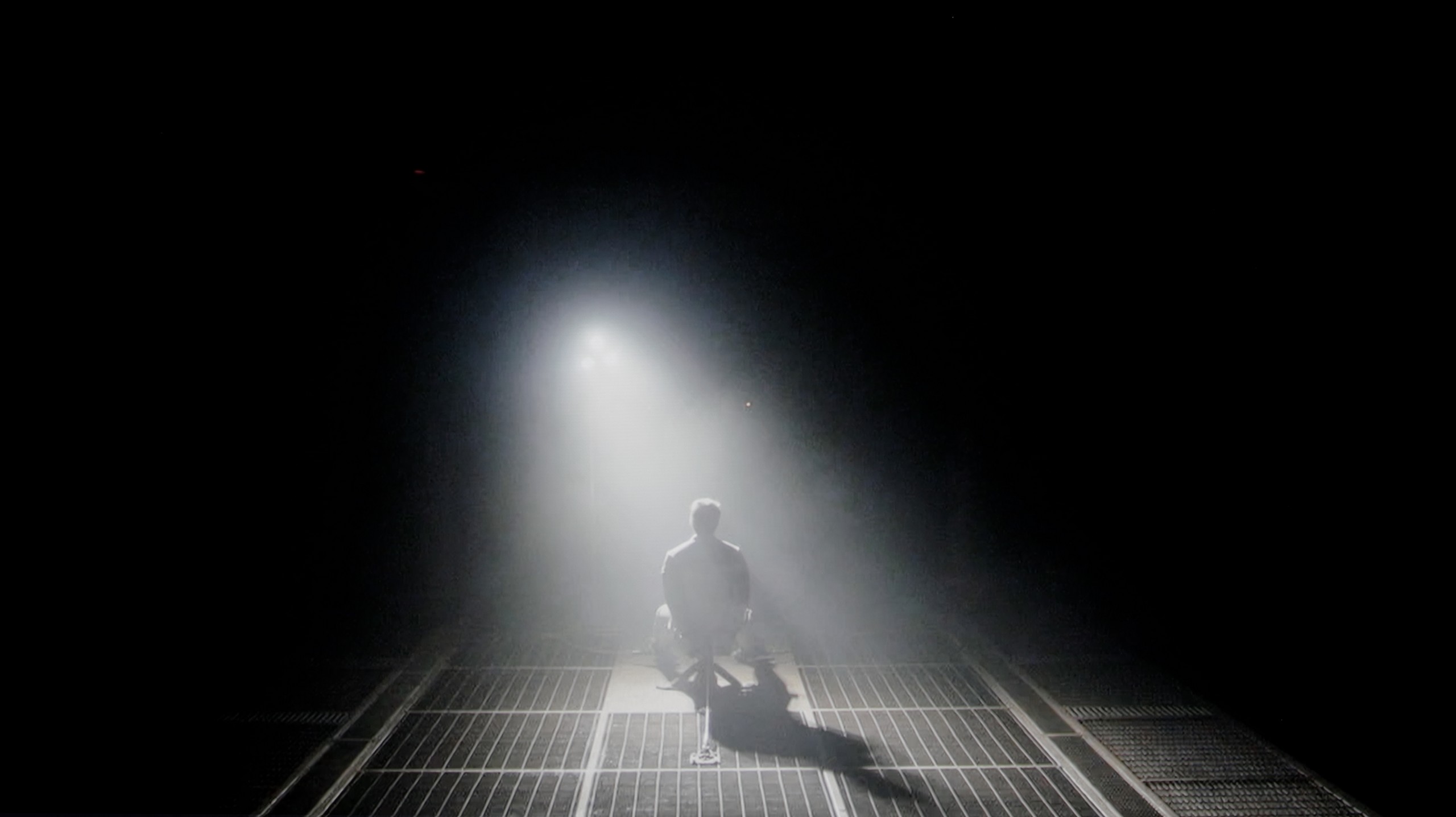
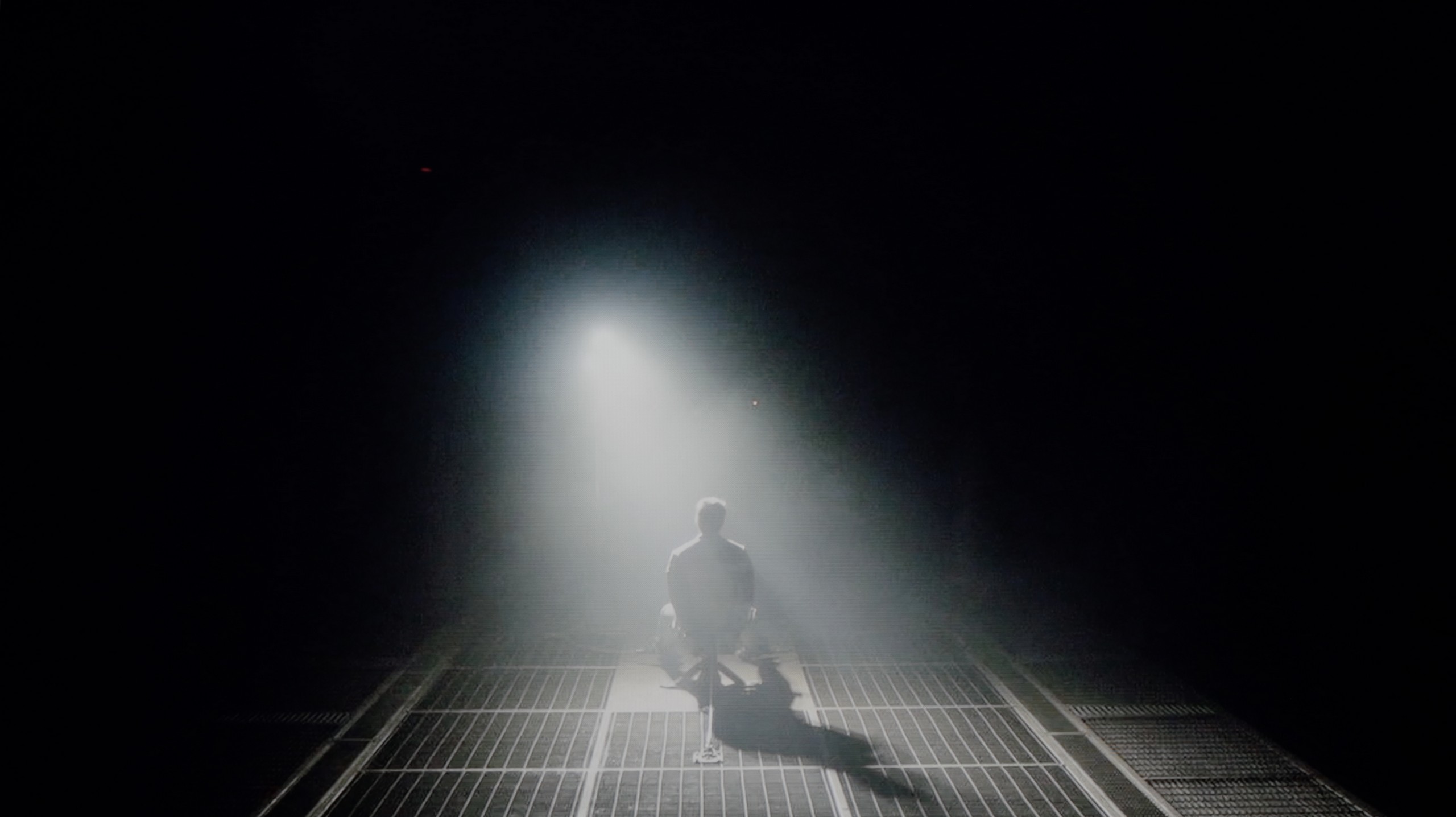
The Samsung S85F in the 55-inch version has something exceptional – it features a QD-OLED panel. This sounds quite surprising, but that’s the fact, at least in Poland. So the question arises: is the difference from last year's S85D with a WOLED panel even noticeable? Yes, although in this particular test – black levels and contrast – it practically makes no difference.
Regardless of the scene, the S85F delivers infinite contrast and perfect black levels that we expect from any OLED. These results can amaze even the most demanding movie enthusiasts. It’s worth noting that such deep blacks can only be offered by televisions with organic panels – and it doesn’t matter whether it’s WOLED or QD-OLED. So, if you dream of a screen that can "turn off" the light in a scene as effectively as an independent cinema in a dark room, the S85F is one of those televisions.
Samsung The Frame Pro has officially been labeled as a Mini-LED backlit television, but… is it really? In the 65-inch variant we tested, we counted only 24 dimming zones. The number itself seems somewhat modest, but the more important aspect is their placement – all of them are located along the bottom edge of the screen. In practice, this means that The Frame Pro should be treated more as edge-lit rather than a full-fledged Mini-LED with dense, direct local dimming. Samsung has used a similar maneuver before, renaming the Q70 series to Neo QLED televisions – mainly for marketing purposes. How does this translate to picture quality? Black levels and contrast look decent, but there are no effects known from televisions with advanced local dimming like in the QN80 series. Much of this is due to the high-quality VA panel, which provides solid parameters on its own – a contrast ratio of about 5000:1 looks good and, importantly, is stable without significant fluctuations. However, if someone buys The Frame Pro hoping to experience “true Mini-LED,” they might feel disappointed. We ourselves expected this model to differentiate itself more from the classic The Frame series in terms of contrast quality; however, the differences turned out to be smaller or even nonexistent compared to what the “Pro” designation might suggest.
HDR effect quality
6.2/10
5.8/10
Luminance measurements in HDR:

Result
666 nit

Result
703 nit

Result
742 nit

Result
732 nit

Result
433 nit

Result
745 nit

Result
458 nit

Result
476 nit

Result
446 nit

Result
660 nit
Scene from the movie “Pan” (about 2800 nits)


Scene from the movie “Billy Lynn” (about 1100 nits)


Static HDR10


Dynamic: HDR10+
Dynamic: HDR10+


HDR luminance chart:
Samsung The Frame Pro
HDR luminance
Samsung OLED S85F (QD-OLED)
HDR luminance
As an OLED, the Samsung S85F can really shine – literally. Under favorable conditions, it can generate brightness exceeding 750 nits. This is hugely significant because most movies are created with displays around 1000 nits in mind. In practice, this means that in scenes with moderately large bright elements, the image can look simply fantastic. However, it's not always so rosy. When there is a massive amount of light on the screen – whether it's a vast bright background or an entire screen filled with white – the S85F must tone it down. The brightness can drop by even four times in such scenes. This limitation is known to basically every OLED in this price range, so we don't consider it a particular failing. However, something that deserves praise is what sets this model apart from the competition – color gamut coverage. Thanks to the QD-OLED panel, our colorimeter showed values exceeding 100% DCI-P3 coverage and as high as 86% for the ultra-wide BT.2020 palette. Such results are hard to find even in televisions that cost several times more.
Samsung The Frame Pro belongs to relatively bright televisions. In synthetic tests, we managed to achieve values around 900 nits, which, for a lifestyle model, is quite a decent result. In full-screen scenes, such as the frame from the movie The Meg or the opening sequence in Life of Pi, brightness remained at levels of 700–800 nits. These are values that allow you to fully enjoy HDR effects and capture their cinematic magic. However, the situation complicates when smaller, point light sources appear on the screen. The edge lighting used here, equipped with the ability to locally dim entire strips, does not handle them very well. It sometimes happens that small elements are excessively dimmed, which weakens the effect, or on the contrary – they are significantly brightened, but at the cost of losing black depth in that part of the image. This can be compared to light glows resembling the spread of a laser beam in dense fog – the effect is visible and bright, but at the same time, it is not very natural and distracts our attention. Fortunately, the color aspect performs better. Thanks to the use of a quantum dot filter (QLED), the colors are saturated, and the reproduction of the DCI-P3 palette exceeds 92%. In general, movies or series watched in HDR on The Frame Pro present a rich color palette, even if the contrast and the operation of the backlight algorithms can sometimes distract our attention.
Factory color reproduction
5.5/10
5.5/10


Factory Mode
After calibration
Samsung, as befits a manufacturer with ambitions, equipped the S85F with a mode called Filmmaker. Its task is simple: to make the colors on the newly purchased television as true to what the director wanted us to see as possible. Sounds great… but, as often happens, a great-sounding theory doesn’t always translate into perfect practice.
In the tested unit, it quickly became apparent that the image – due to an excess of blue and red – looked as if someone had overdone the saturation a bit. As a result, quite significant color errors appeared, particularly in 4K content. To make matters worse, there was a brightness issue – the S85F could brighten most scenes more than it should, taking away their intended mood.
Fortunately, Samsung televisions, including the S85F, offer an impressive number of settings for advanced calibrators. This means we could check what this panel is truly capable of when it gets into the right hands.
The best results were, of course, achieved in Filmmaker mode, which immediately showed that Samsung paid attention to the factory settings. In SDR content – the type of content most often viewed – The Frame Pro performed really well. White balance and gamma were almost perfectly matched, making the image look natural and consistent. Yes, there were some noticeable errors, especially in skin tones and reds, which could be overly saturated, giving everything a slightly “warmed up” character, but in everyday use, this did not significantly affect the viewing experience. In the case of HDR content, the situation was similar regarding white balance. It was at a good level; however, the biggest problem turned out to be brightness management. The EOTF curve was set in such a way that in many scenes the image appeared to be overexposed, and the brightest areas lost details and turned into solid patches of light. This severely undermined realism and made the colors appear strongly over-sharpened. Fortunately, Samsung provides the option for manual adjustment of the curve in its televisions, so we opted for calibration, and its results can be seen below.
Color reproduction after calibration
9.3/10
8.5/10




Thanks to the vast number of settings in the menu, we managed to bring the S85F almost to perfection. White balance in SDR content? Literally perfect – deviations do not exceed a value of "1". Thus, it can be confidently said that in materials with not very high dynamics, we have an image close to reference.
In HDR content, minor issues did arise, but they are of little significance in practice – most errors fall below the threshold of perception, which is a value of "3". We also managed to tame the S85F regarding brightness management – the EOTF curve, even in films, adheres to an almost perfect line. This is one of those cases where after calibration, you can comfortably forget about the settings and simply enjoy movies and series at the highest level.
After calibration, the SDR mode looks simply perfect. We managed to eliminate the overly strong red saturation that previously gave the picture a somewhat excessively warm character. The colors became more balanced, which translated to a natural and pleasant reception of daily content – from television to movies and series from streaming or materials on YouTube. In HDR mode, the EOTF curve required the most work, as it originally caused excessive burning of the entire image. Calibration largely helped to "tame" this problem – the image stopped being overexposed, and details in bright areas became more visible. Of course, the limits are set by the television's own design, as edge lighting reveals its limitations, and even the smallest elements of light can still be oversaturated or blend into the background. However, this is a matter of technology, not calibration itself. After the correction, The Frame Pro is much more enjoyable to watch, and it's definitely worth opting for if you want to make the most of your television's capabilities.
Smoothness of tonal transitions
7.9/10
9.5/10












Thanks to the QD-OLED panel, the color blending on the S85F performs really well. It's especially worth noting how it handles the darkest, most demanding scenes – where most televisions start to struggle, this model works almost perfectly.
Interestingly, a minor stumble can be noticed in those easier, brighter shots. There is a slight banding of colors, but it's so subtle that it's hard to believe it would actually bother anyone while watching.
Here Samsung truly deserves immense applause. The Frame Pro has proven to be one of the best TVs of the year when it comes to the smoothness of tonal transitions. During testing, we were practically unable to detect any noticeable issues with color blending – the gradients looked smooth and natural, and the "banding" typical of many TVs simply did not appear. Yes, in very dark scenes, minimal imperfections can be noticed, but you have to really focus to see them – even the seasoned eye of our editorial team had trouble with this. Therefore, in everyday viewing, there’s no way anything will disrupt your experience. This is a huge plus because it’s in darker scenes that TVs most often struggle. You won’t experience that here.
Image scaling and smoothness of tonal transitions
7/10
7.5/10
Smooth transition function
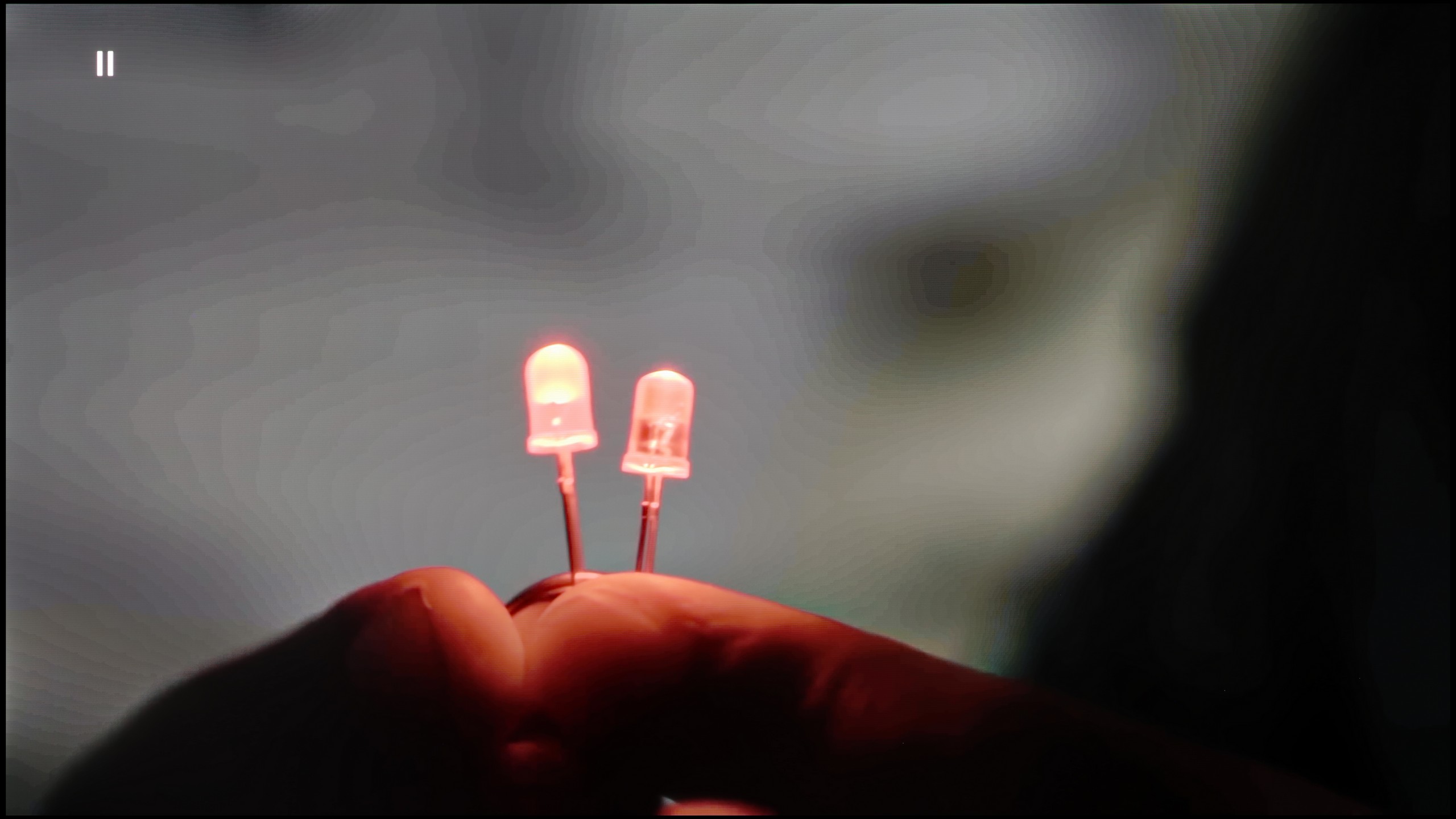
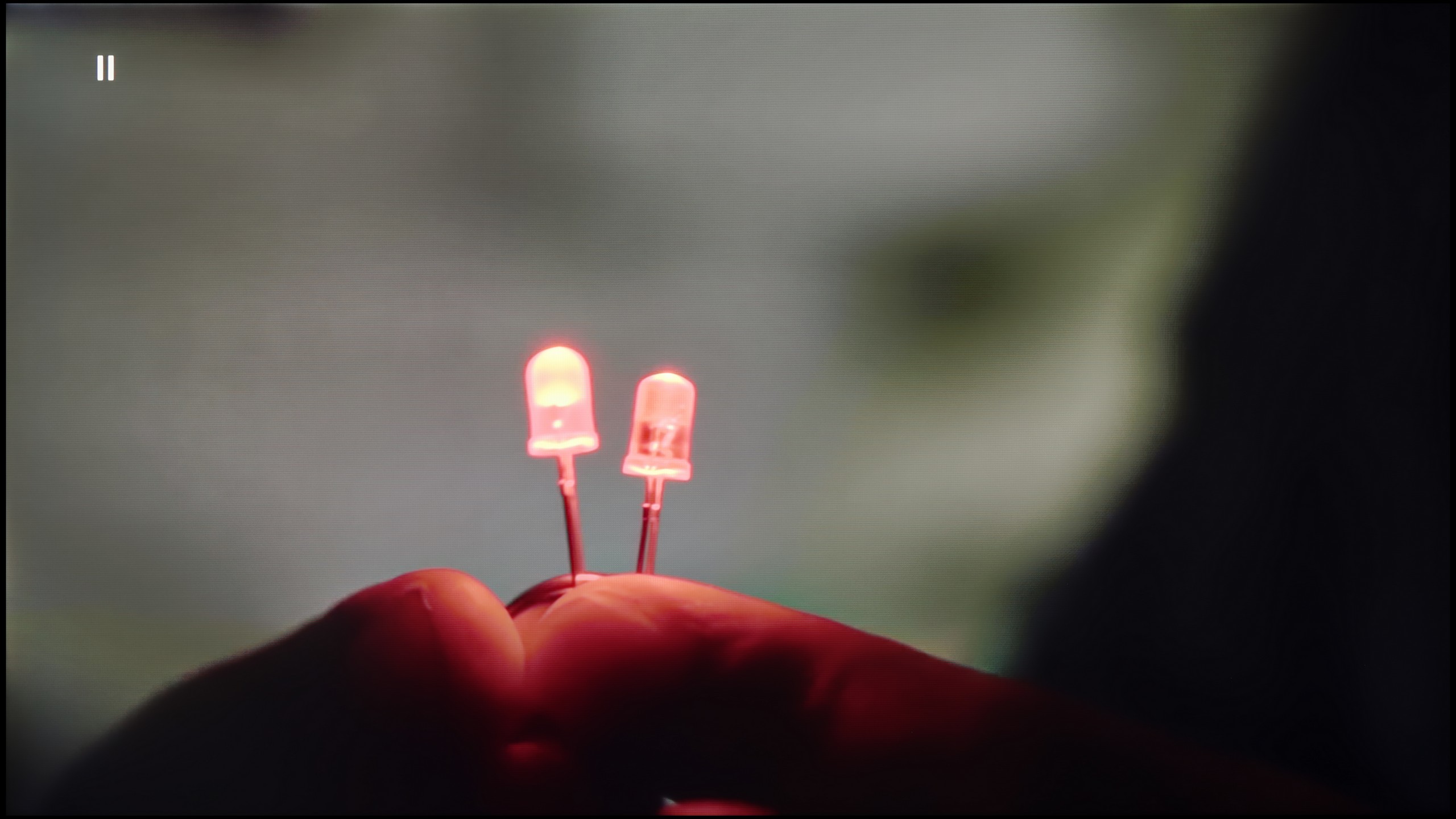
Image without overscan on the SD signal


The tone transition smoothing feature in the S85F works really well – it can completely eliminate the problem of visible bands in very poor quality materials, even from YouTube. Unfortunately, even the lowest level of this option comes with compromises. Noise reduction is aggressive enough that it can smooth out film grain, which many of us consider an element of the cinematic atmosphere. At the "Standard" level, we did not notice that this feature removed anything significant from the image, so we can recommend this setting. On the other hand, the "High" level is a different story – it can smooth not only noise but also fine, desirable details such as the texture of objects.
When it comes to image scaling, the S85F performs very well. The material looks sharp, and the only minor imperfection is slightly visible contour jaggedness. And there’s the ongoing issue with Samsung televisions – overscan. This can cause some scenes to have their frames slightly trimmed, which is worth keeping in mind when watching very old content.
While the smoothness of tonal transitions in 4K HDR content on The Frame Pro is not a problem at all, naturally with weaker signal quality – from television, HD content, or older Full HD films – imperfections may occur. Therefore, it is crucial how the television handles these limitations thanks to its image processor. The noise reduction feature works really effectively here. At the medium setting, it eliminates unwanted bands or artifacts, smoothing the image in a noticeable but not overly exaggerated way. However, it should be noted that Samsung tends to operate aggressively – even at the lowest setting of this feature, it can "eat" film grain. It is therefore advisable to use it with caution and adjust the settings to the material being viewed.
The upscaling itself is at a high level. The Frame Pro can effectively upscale older materials to native 4K resolution while maintaining good sharpness and readability. Movies and series in lower quality simply look better here. However, it is worth mentioning a minor drawback – typical for many Samsung televisions. With very old sources of poor quality, you may notice cropping of the image edges on the left side of the screen. This is not a problem that will ruin the viewing experience, but it is good to know that it may occur.
Blur and motion smoothness
8.5/10
7.8/10
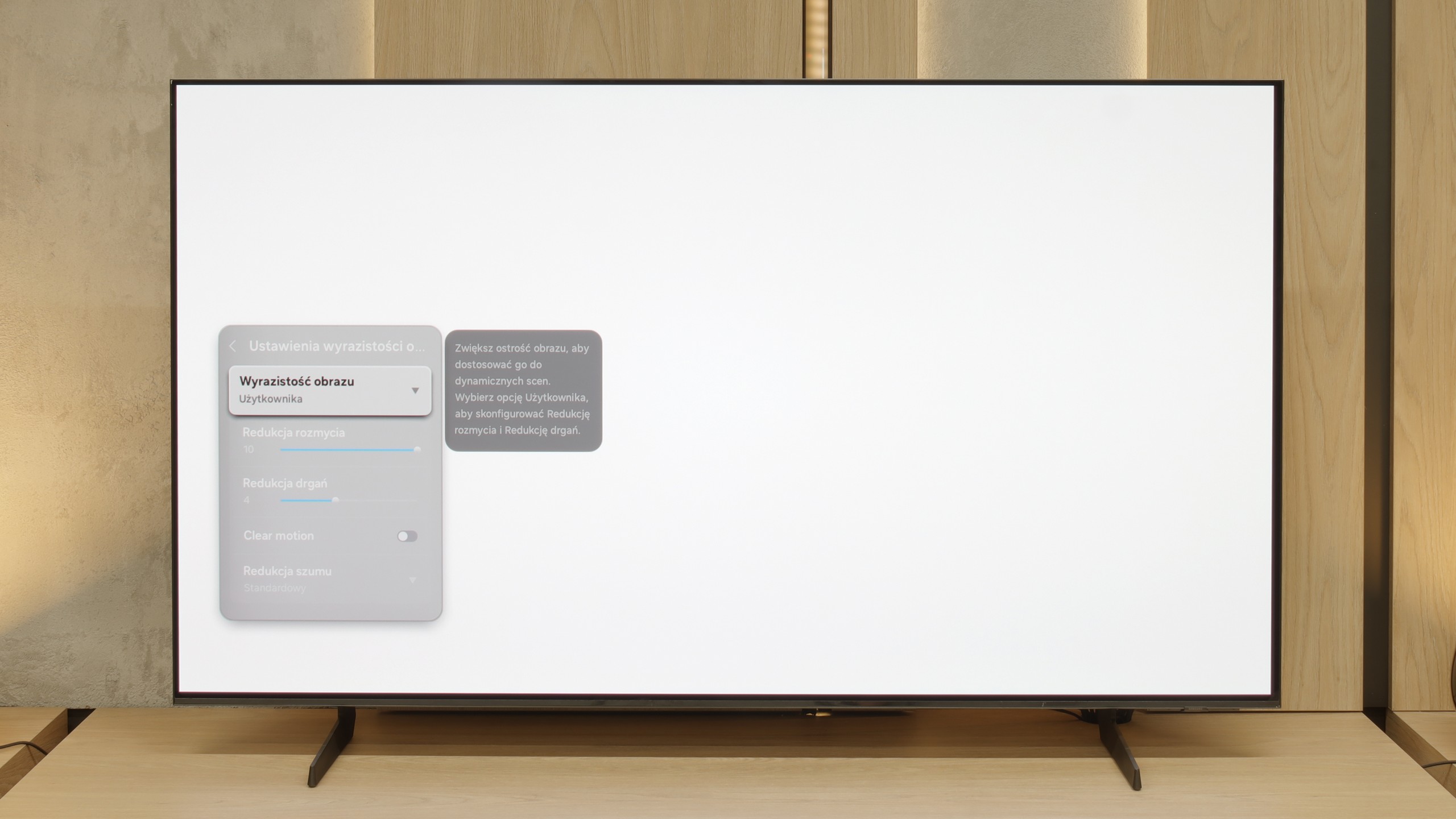
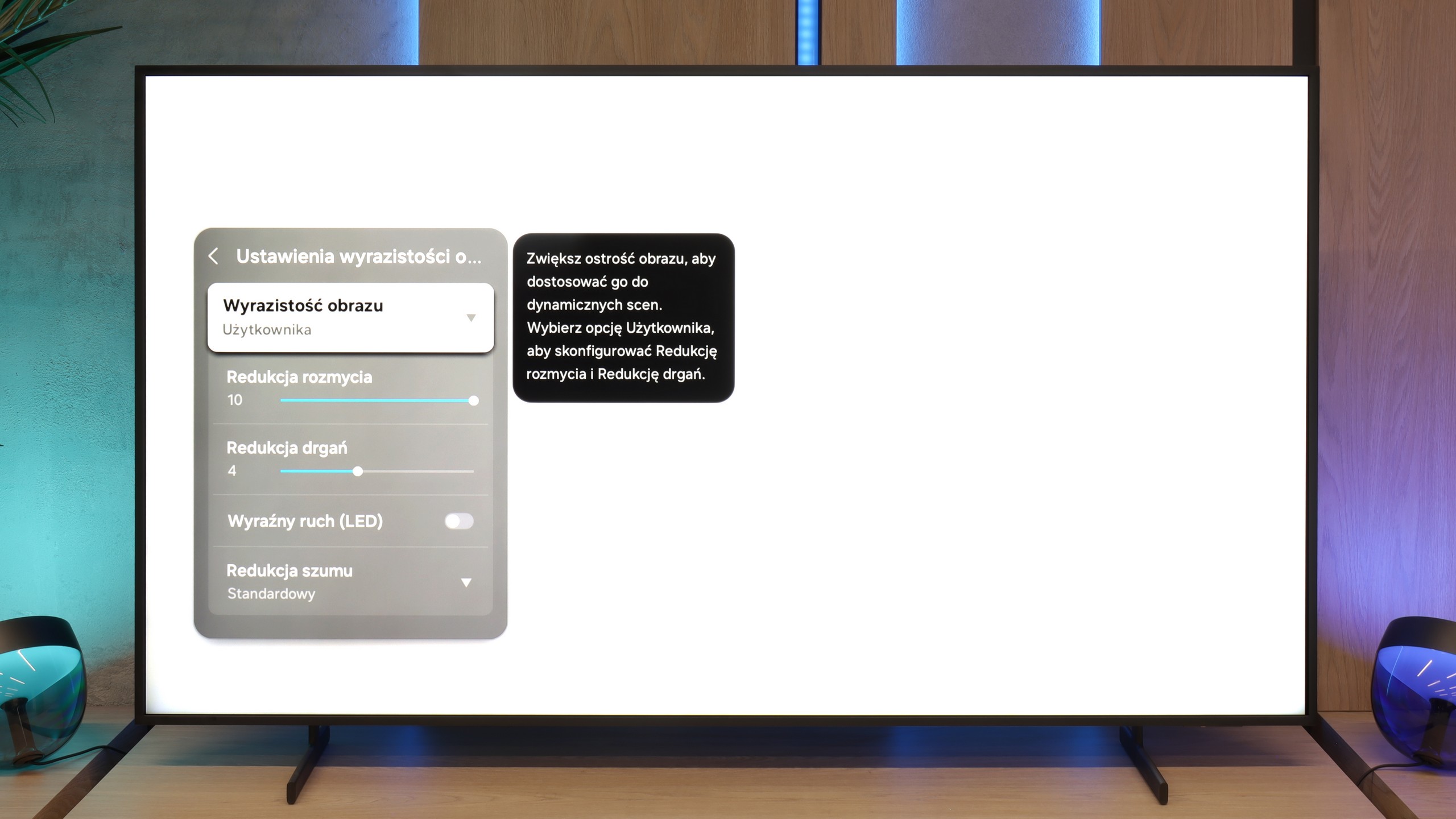
Blur (native resolution, maximum refresh rate):



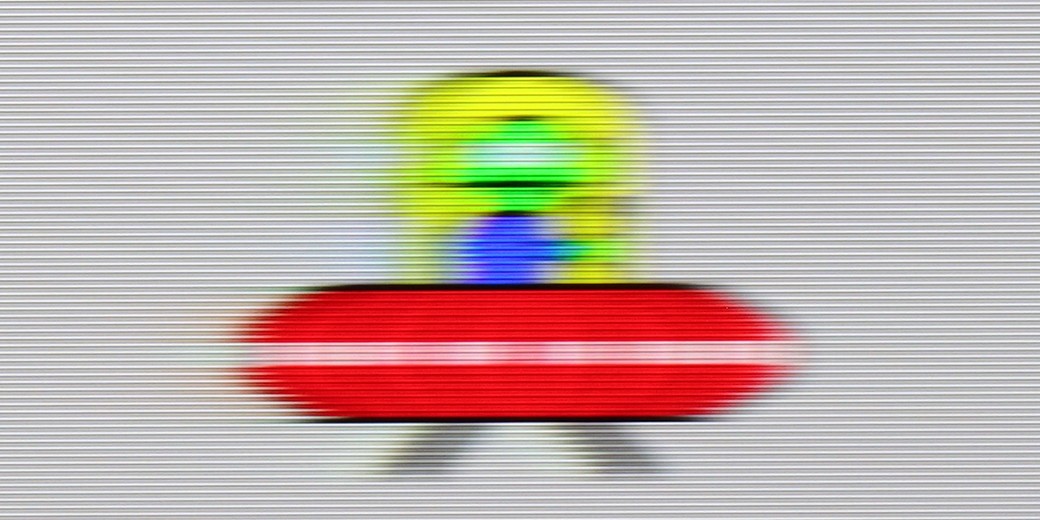
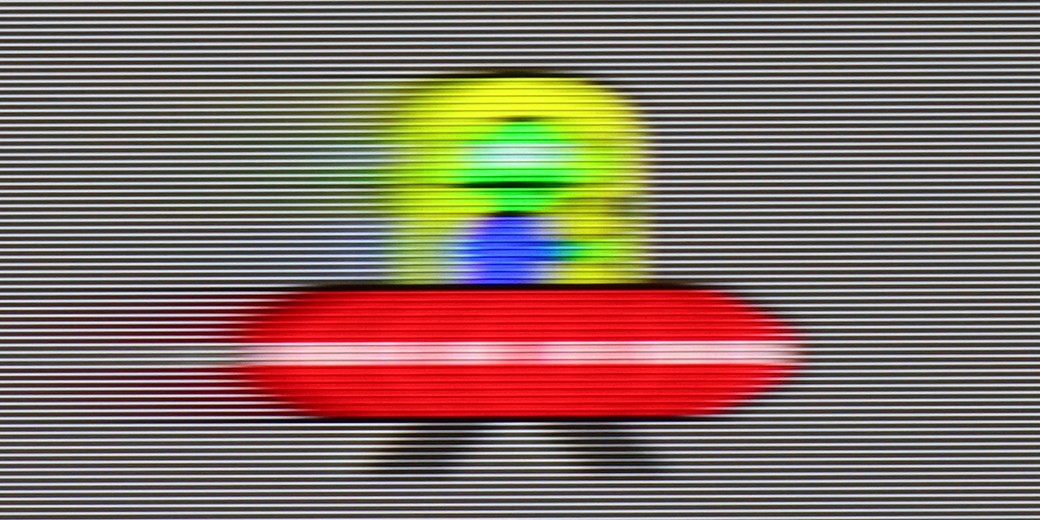
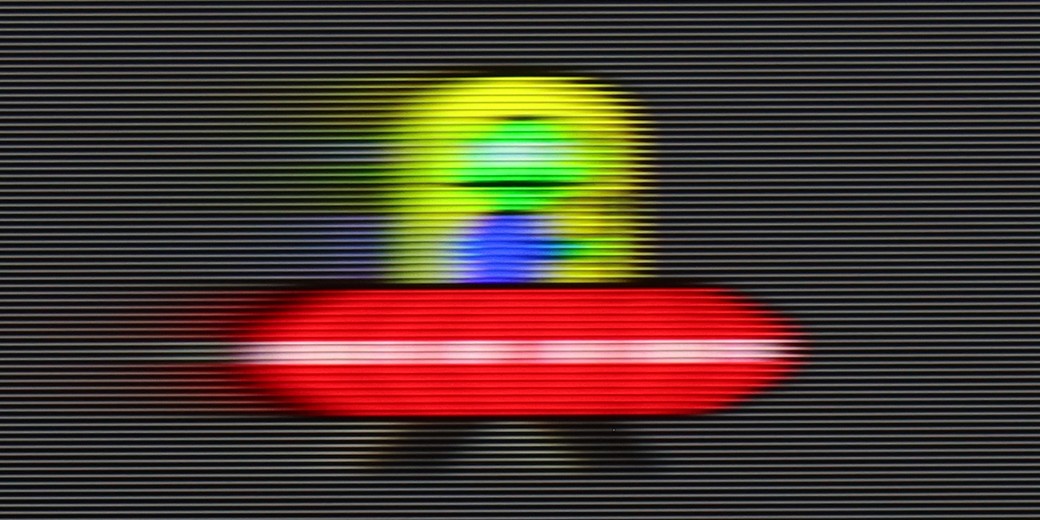
Blur (BFI function enabled):
Image flickers in this mode



Image flickers in this mode



Smużenie (4K@60Hz Game Motion Plus):

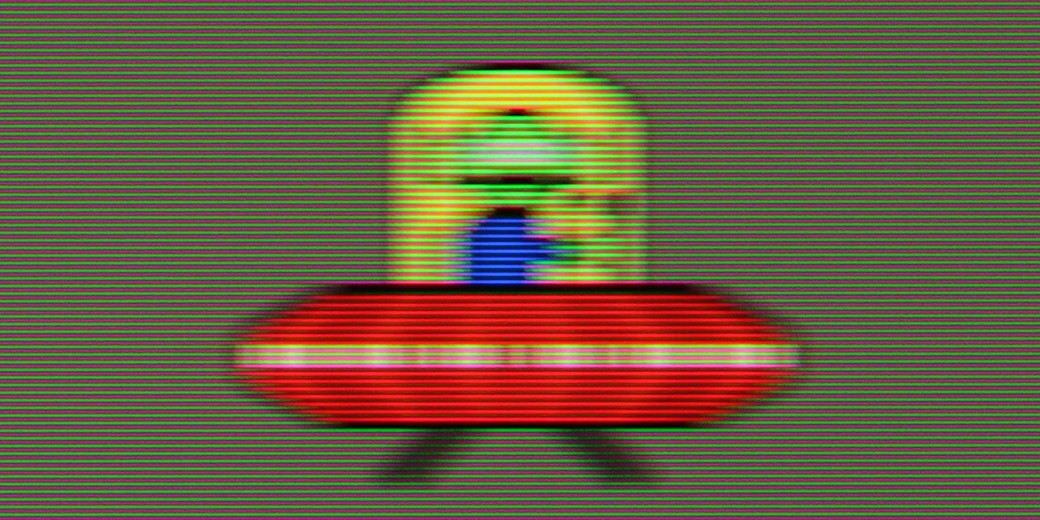

Smużenie (4K@144Hz):

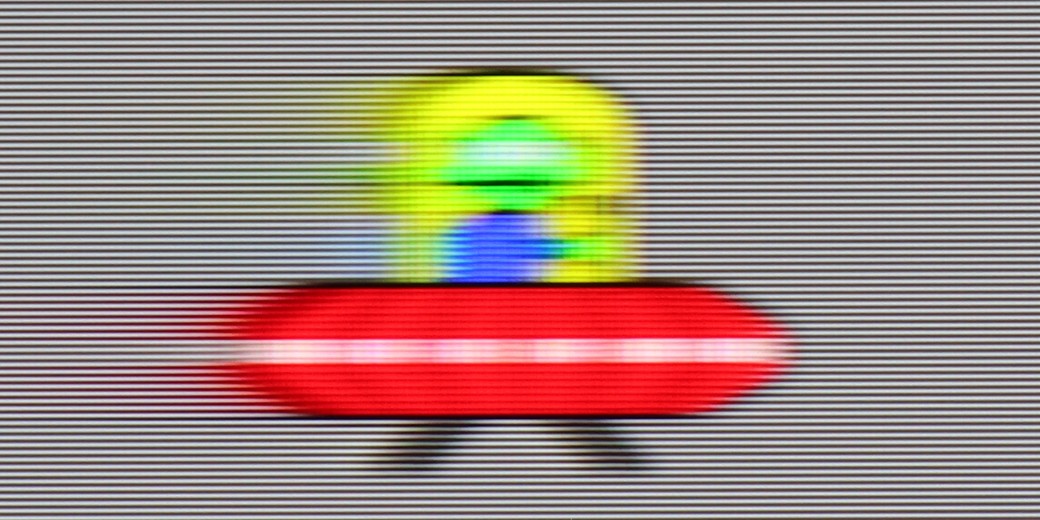
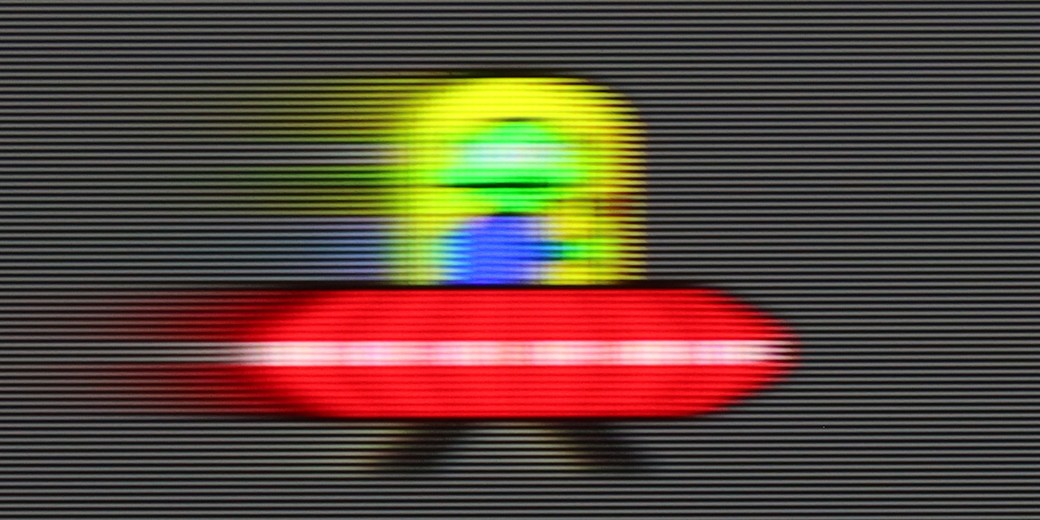
S85F is a hellishly fast television – and this is not just an empty catchphrase for effect. Thanks to the 120 Hz OLED panel, dynamic scenes, whether in games or while watching a live match, look exactly as they should – smoothly, sharply, and without the feeling that something is "escaping" from the frame. The lightning-fast pixel response time, typical of OLEDs, plays a crucial role here. Transitions between frames are practically instantaneous, and the image remains clear even during the fastest camera movements. A ball flying across half the field? A car racing in a chase scene? Everything here is clear and free of the characteristic "trail" found in LCDs.
This is exactly what we expect from a good OLED – zero compromises in motion fluidity. The S85F gives the feeling that regardless of the pace of the action, we can focus on what is happening on the screen, rather than on the imperfections of the image.
The smoothness of motion in The Frame Pro is ensured not only by the panel, which operates with a refresh rate of up to 144 Hz, but also by the image processor and the smoothing system. It is thanks to this that we can adjust the way we display movies or sports broadcasts to our own preferences. Available are sliders for motion blur reduction and judder reduction – the first function improves the sharpness of fast movements, while the second allows for softening the "jumping" image effect during camera pans. Therefore, everyone can choose between a cinematic character of motion and a smoother, more "television-like" style.
Console compatibility and gaming features
8.2/10
8.2/10
- ALLM
- VRR
- VRR range48 - 120Hz48 - 144Hz
- Dolby Vision Game Mode
- Correct implementation of HGIG
- 1080p@120Hz
- 1440p@120Hz
- 4K@120Hz
- Game bar
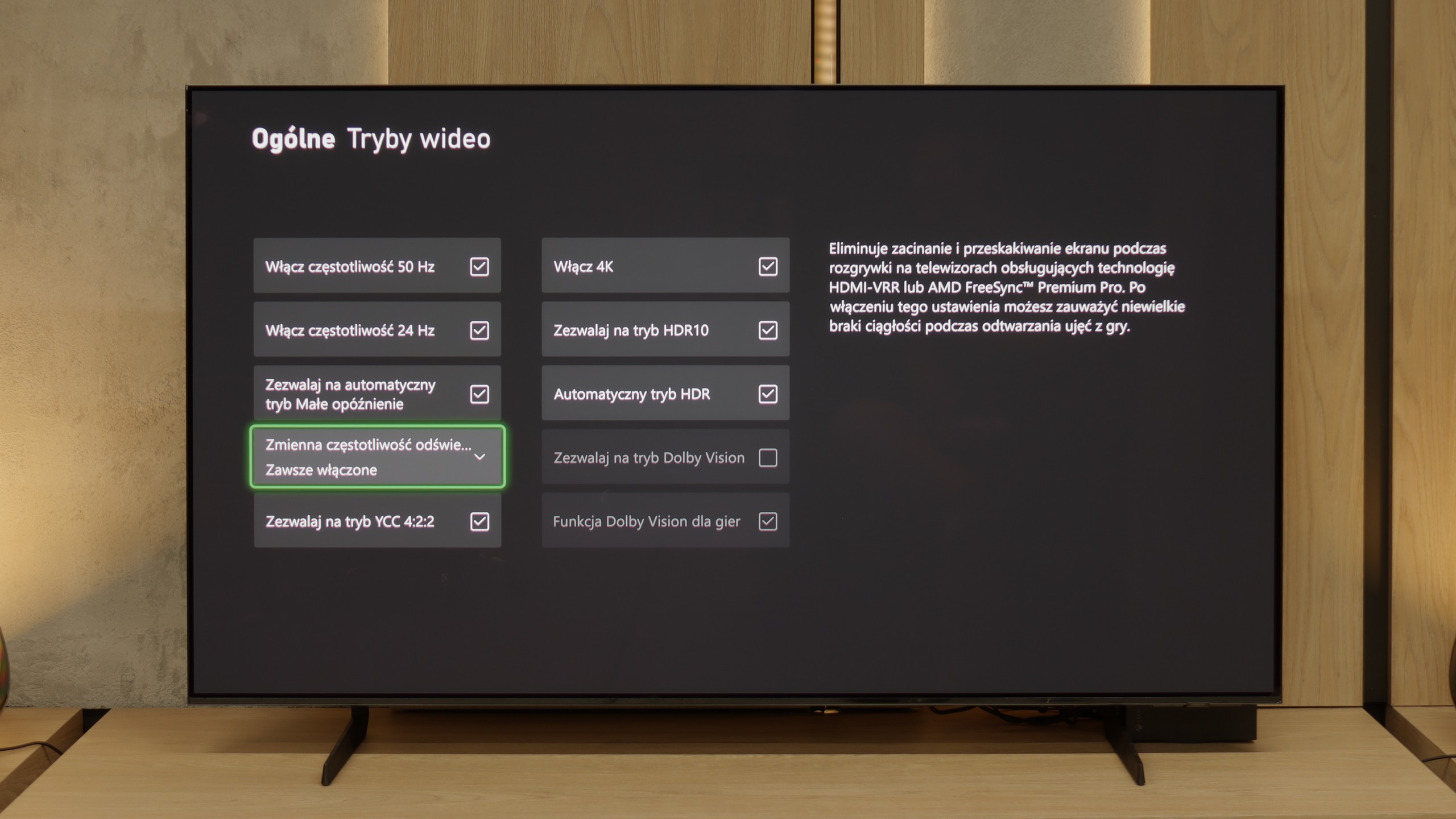
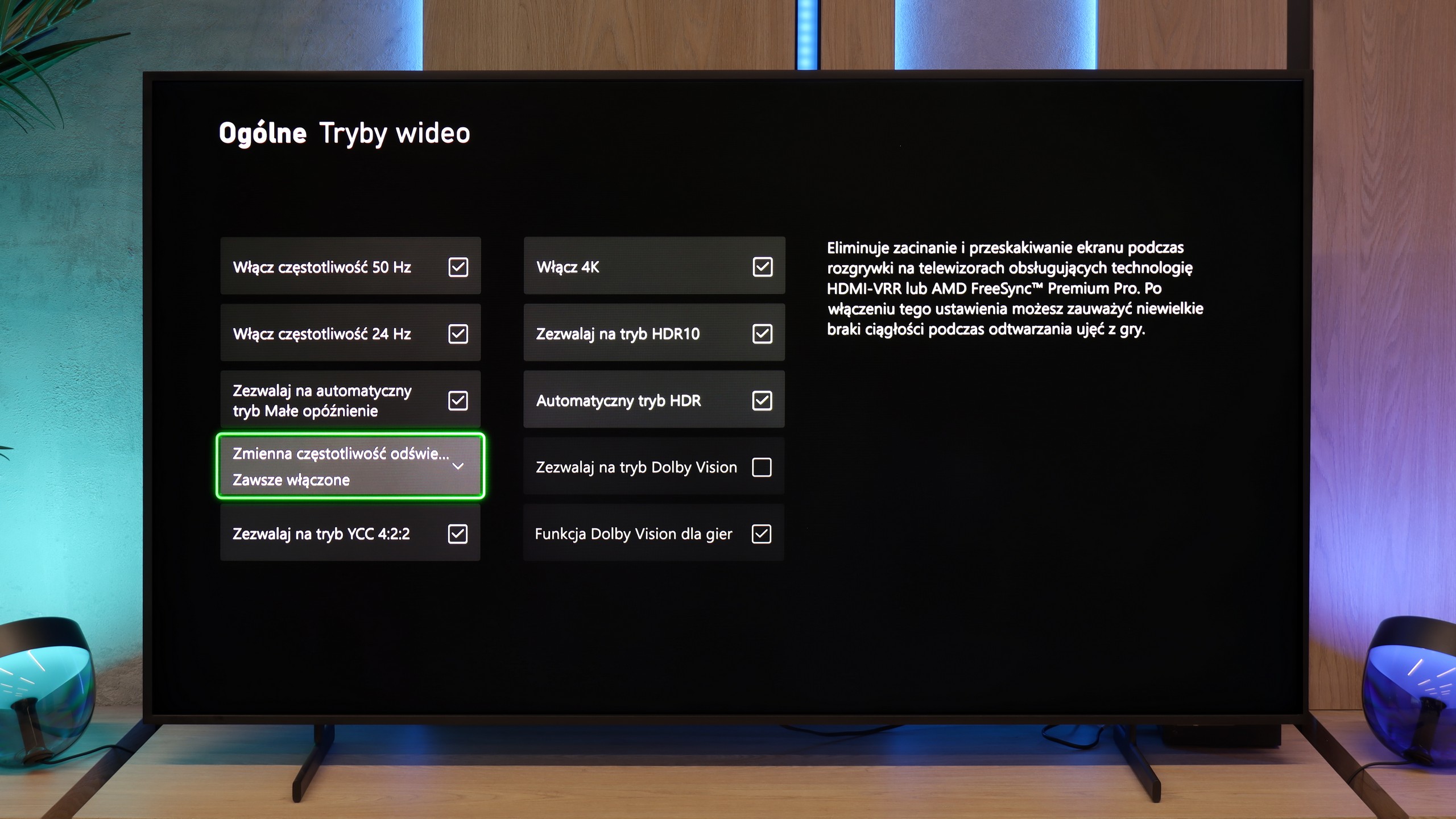
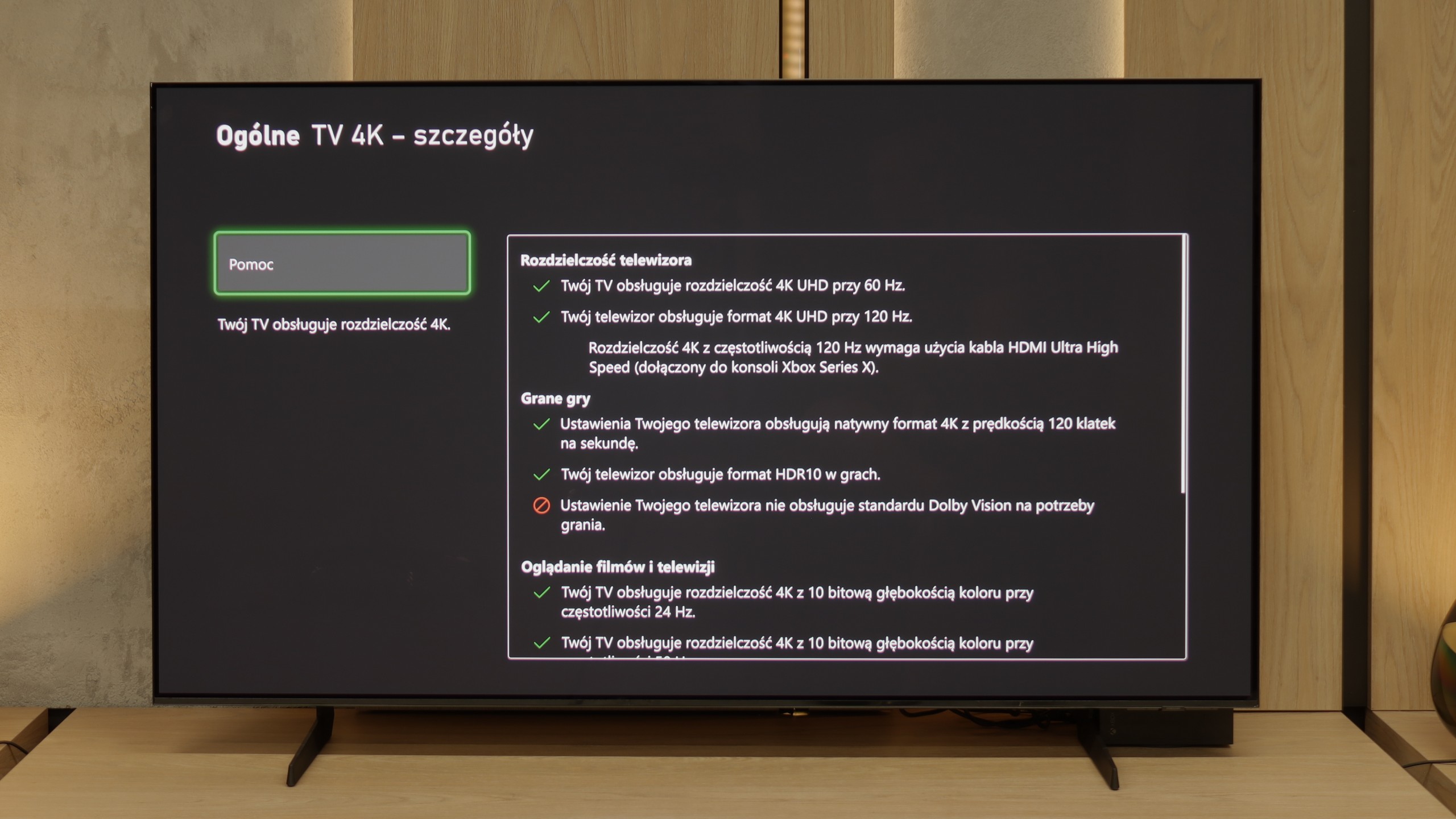
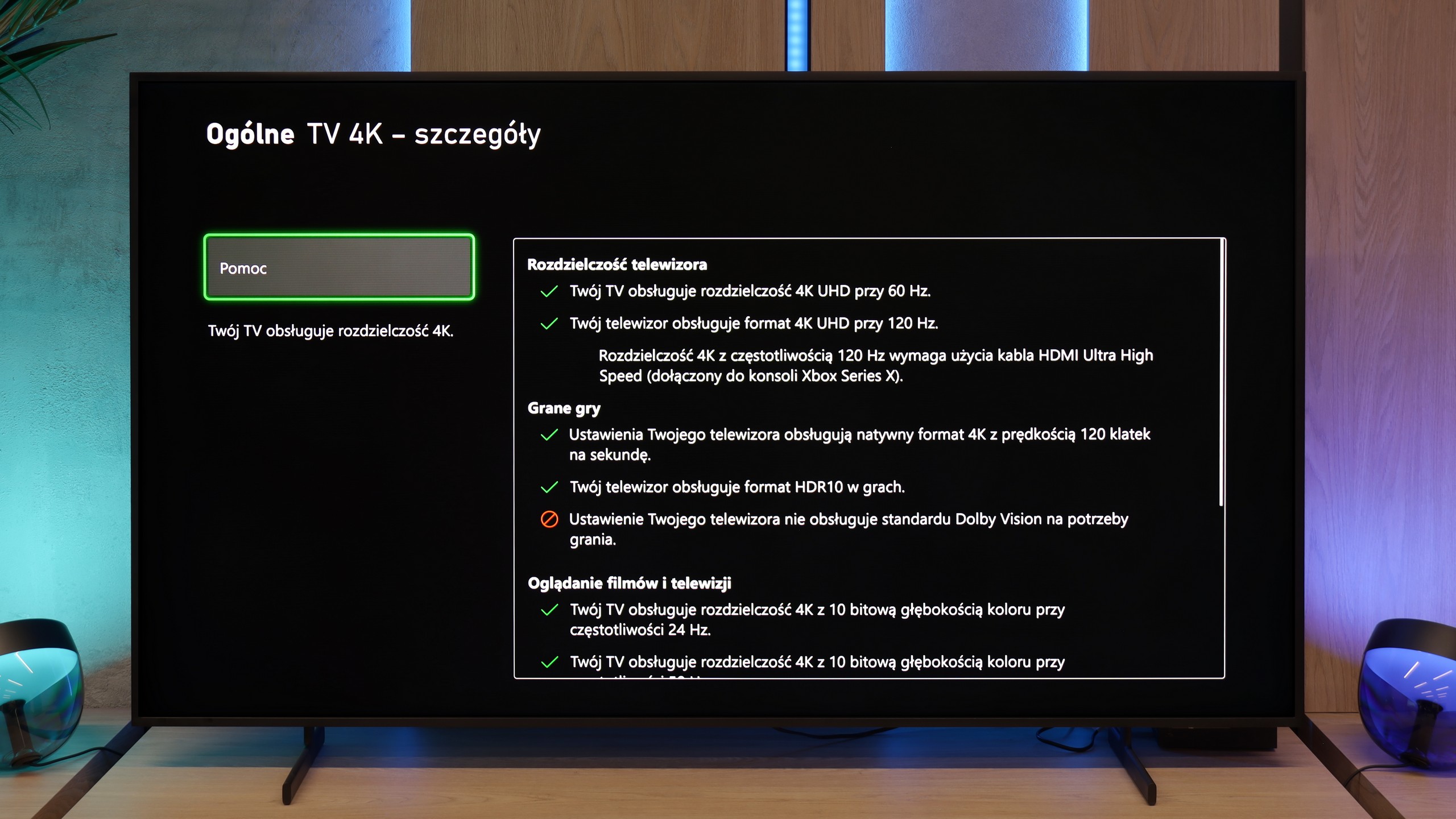
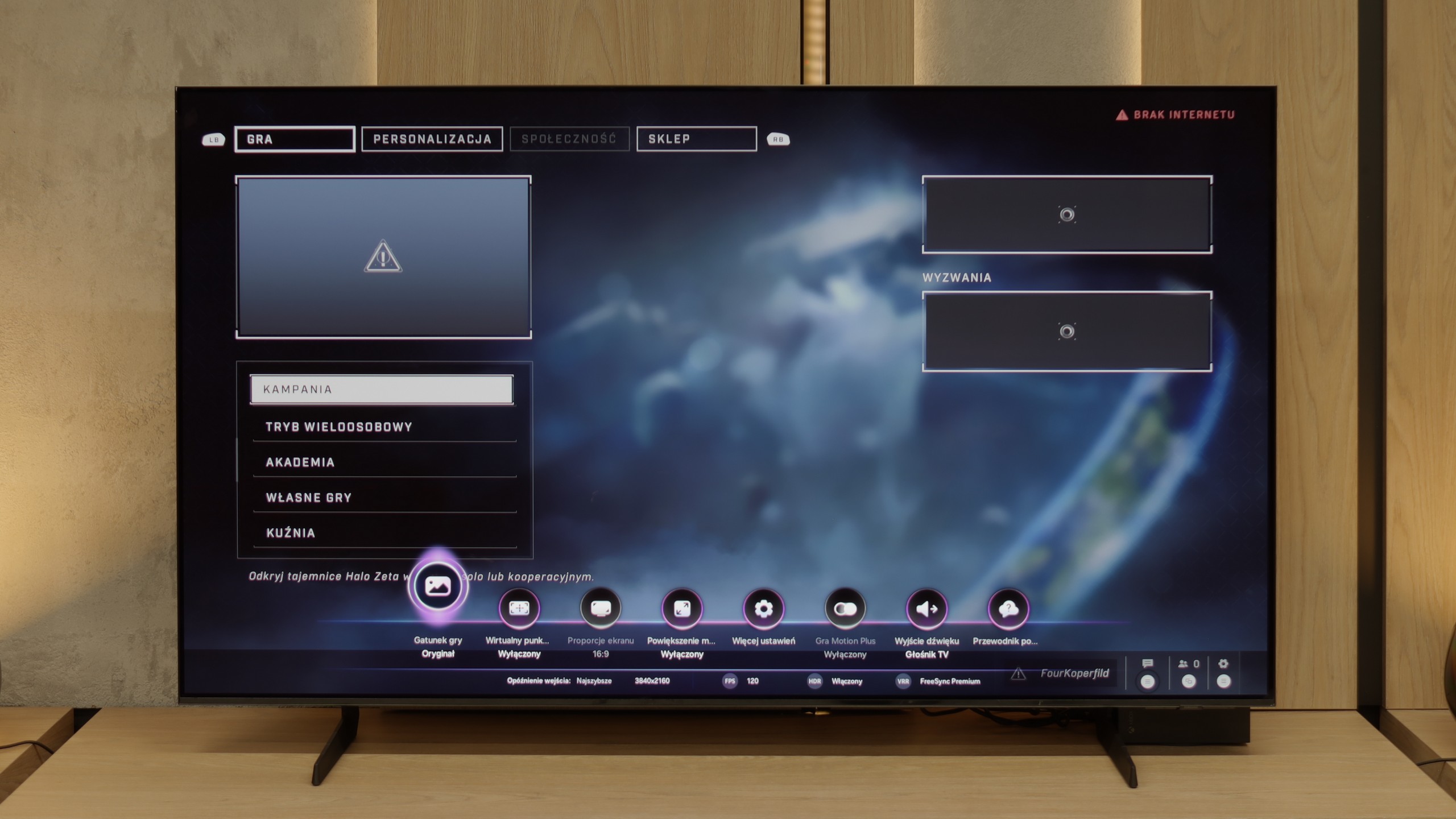
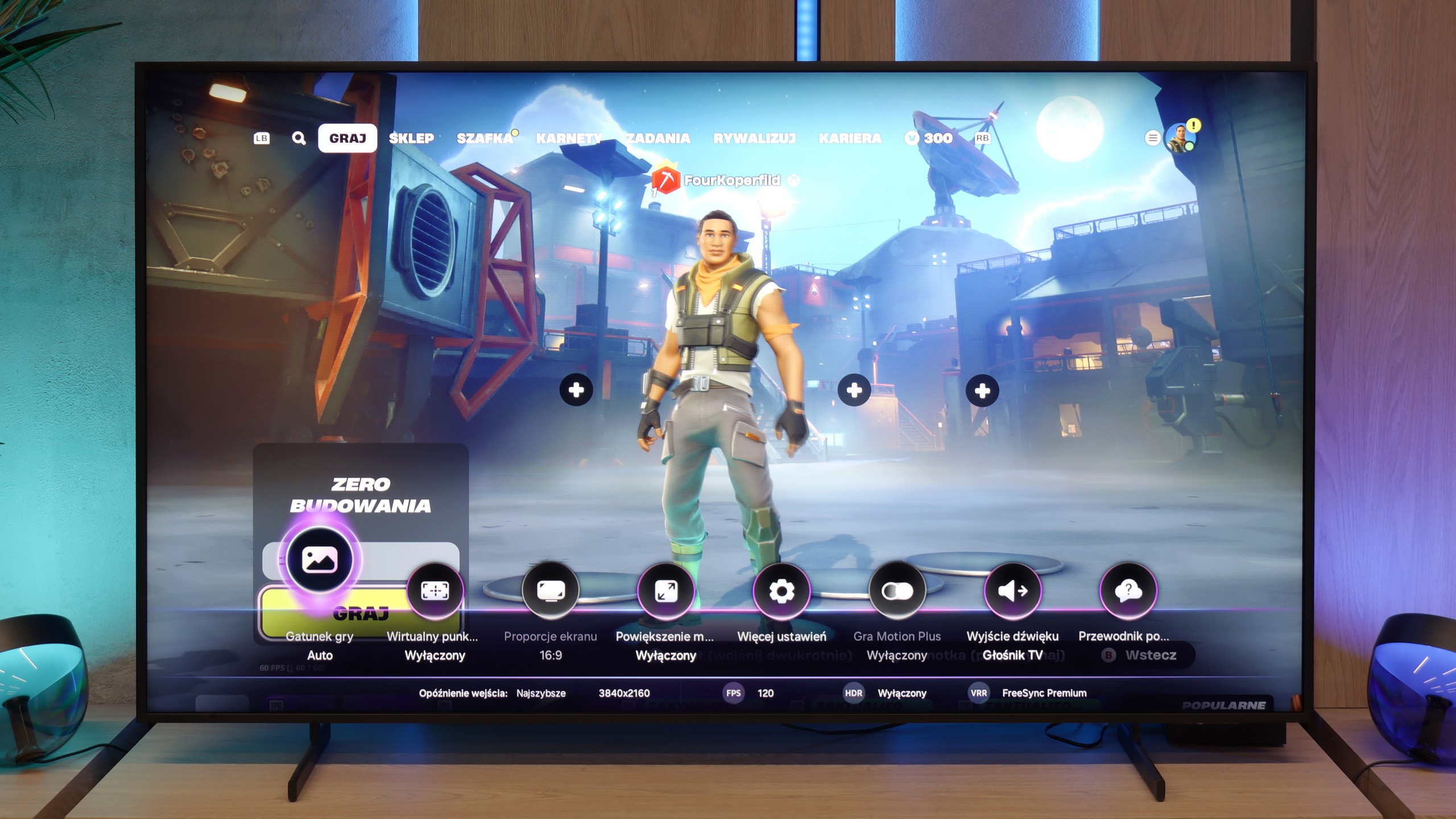
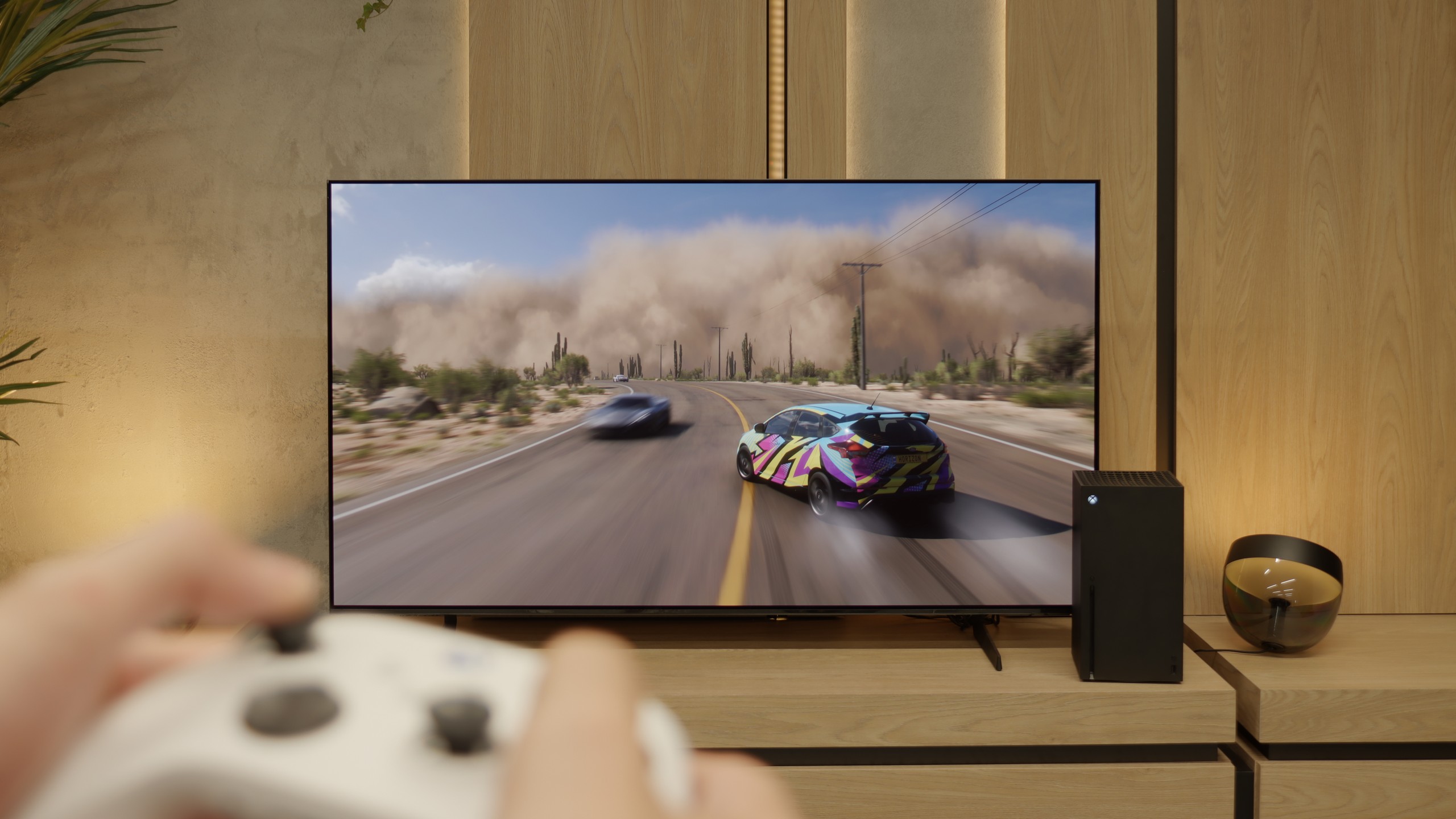
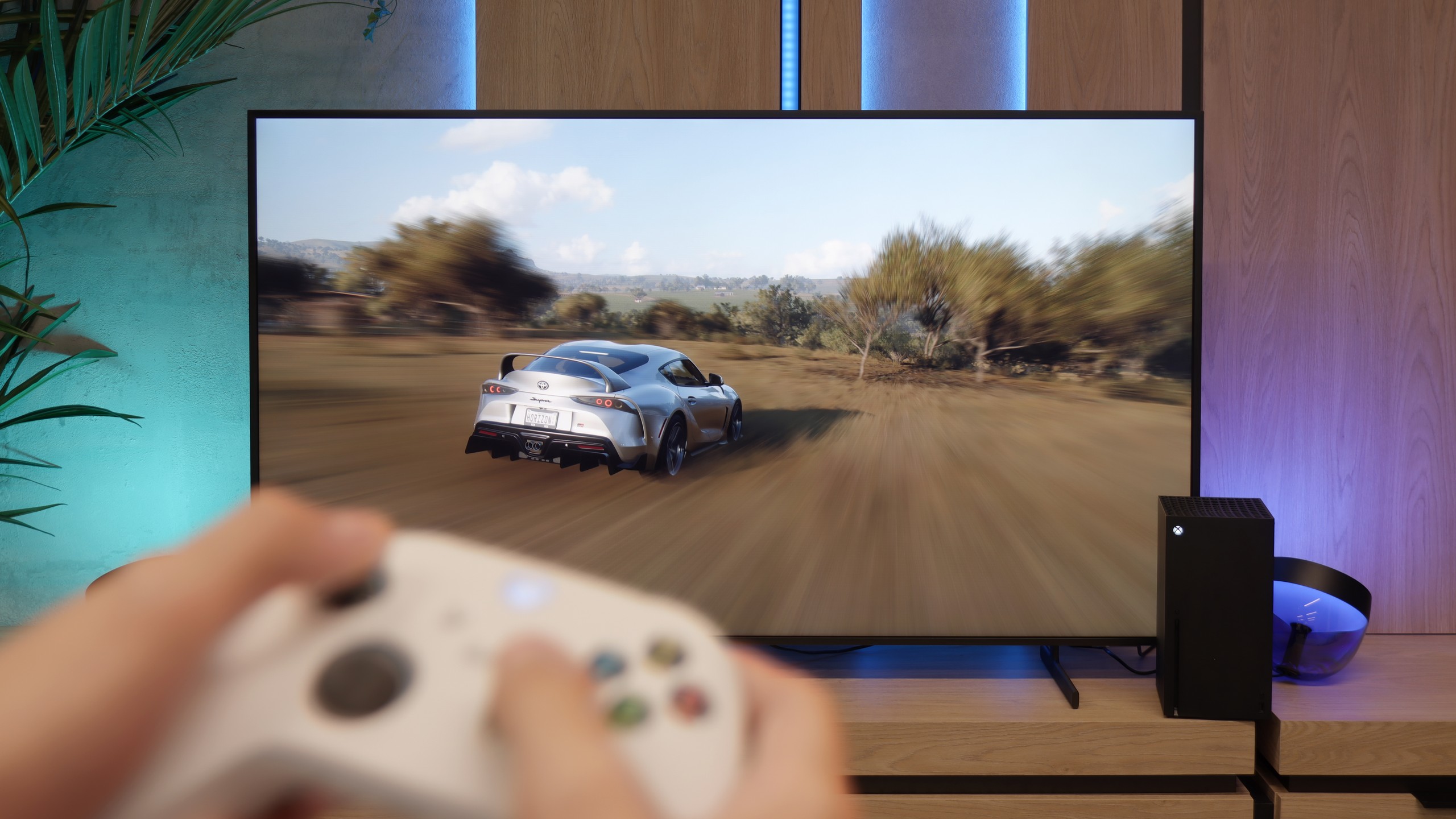
The S85F has practically everything it needs to become the dream screen for gaming. Four fully-fledged HDMI 2.1 ports with a bandwidth of 48 Gb/s, support for VRR, ALLM, a super-detailed Game Bar that clearly shows all parameters – and on top of that, a gem in the form of Game Motion Plus. This is a motion interpolator that makes animation in games more enjoyable, with only a slight increase in input lag. This is a rare combination, and Samsung deserves a big plus for it.
Now comes the moment where we have to complain a bit. The lack of Dolby Vision in Samsung TVs is already standard, so there's no point in hoping (unless something changes in a few years) – but the disappearance of HGiG after the software update is something that’s hard to explain. HGiG (which stands for HDR Gaming Interest Group) is a mode that allows for precise reproduction of brightness in HDR games, according to the creators' intention. Without it, HDR calibration on the console becomes less precise, so we might end up with an image that's too dark in the shadows or overly bright.
Perhaps Samsung will fix this in the next update – and we have high hopes for that. Because if HGiG returns, the S85F will become almost the perfect TV for gamers.
Samsung The Frame Pro doesn’t pretend to be just a “living room” television; here, gamers will also find something for themselves. The manufacturer has ensured a full suite of gaming features: we have support for variable refresh rate (VRR), automatic low latency mode (ALLM), refresh rates up to 144 Hz, and compatibility with both G-Sync and FreeSync Premium Pro. Additionally, there’s the well-known Game Bar panel, which is a quick menu where you can check key parameters on the fly – from refresh rates to active image processing modes. Are there any downsides? Yes, The Frame Pro doesn’t support Dolby Vision in gaming mode, but it's hard to consider this a serious issue – most gamers use HDR10 anyway... so, the HGIG mode. Exactly. The biggest surprise turned out to be the latest software update. Samsung… completely removed this option from The Frame PRO. In practice, this means that the TV independently interprets HDR tone mapping in games, and the user has no ability to enable settings designed for consoles. This is a step backward that may disappoint more informed gamers expecting full compliance with HGiG guidelines. We just hope that this mistake will be quickly corrected.
Interestingly, The Frame Pro also features an atypical arrangement of HDMI 2.1 ports. We have as many as five available – four are located in the One Connect module, and the fifth, in micro HDMI version, is directly on the TV. This solution is quite unconventional, but very practical. Samsung clearly suggests that this is the port to connect your console or computer. Why? Because it minimizes potential delays associated with communication through the wireless One Connect, and in gaming, every millisecond matters. We wrote separately about input lag, but it can be revealed here that by connecting equipment directly to the TV, we achieve the absolute maximum response speed.
Input lag
10/10
9.9/10
SDR
HDR
Dolby Vision
Here, dear gamers, the S85F shows its claws. 5 ms with 120 Hz content and about 10 ms with 60 Hz are results that can be described in one word in the world of televisions – phenomenal. This means that the response to our movements is practically instantaneous. We press the button, and the action on the screen happens without any delay, as if the television were reading our minds. In dynamic games, where a fraction of a second can determine victory or defeat, such values make a huge difference. There is no question of a nervous "wait" for the image to catch up with our movements. The S85F gives us the feeling that everything is under our complete control – and that's how it should be with equipment that aspires to be the ideal screen for gamers.
The Frame Pro in wired mode achieves truly excellent results. Latencies range from 9 to 14 ms, ensuring smooth and instant reactions in games. These are values that can easily be considered reference – even in dynamic titles, the action unfolds without delays, and the controls are precise and predictable. The situation changes when the wireless One Connect module comes into play. While it allows for hiding cables and enjoying greater freedom of room arrangement, it significantly worsens input lag results. In tests conducted at a distance of 2 to 3 meters from the television, with no furniture obstacles, the values jumped to as high as 50ms. While this is acceptable for watching movies since input lag doesn’t concern us at all, it becomes problematic in games and greatly spoils the experience. It’s somewhat of a paradox – on one hand, we have a television that offers some of the best results on the market in wired mode, while on the other hand, Samsung promotes a solution that proves quite detrimental for gamers. And after all, the console is one of the key devices we usually connect to the television...
For the sake of order, we present our wireless measurements at a distance of 2-3m:
SDR | HDR |
|---|---|
1080p60 Hz: 39 | 2160p60 Hz HDR: 40 |
1080p120 Hz: 25 | 2160p120 Hz HDR: 25 |
2160p60 Hz: 40 | |
2160p120 Hz: 25 |
Compatibility with PC
7.6/10
8.4/10
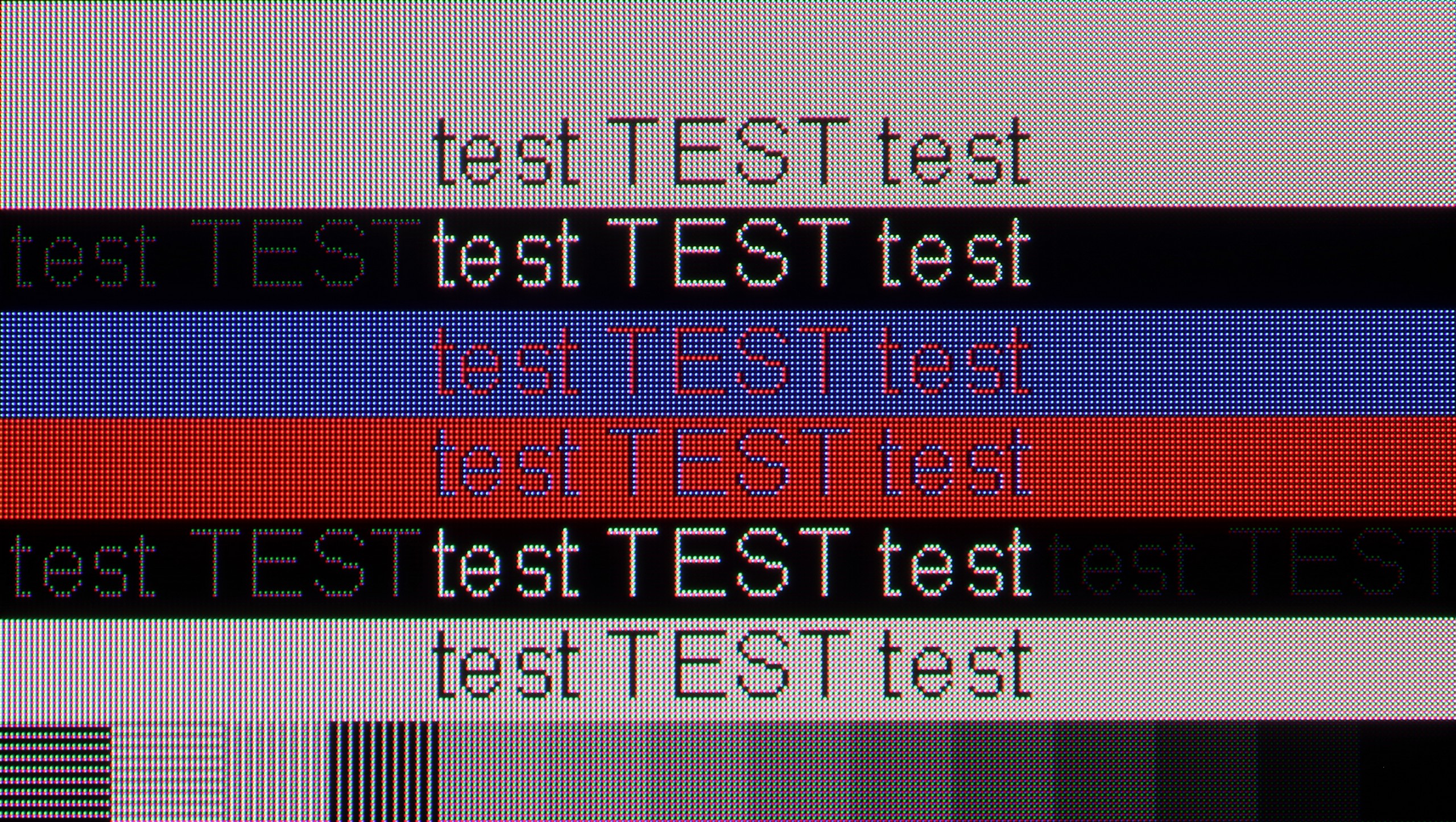
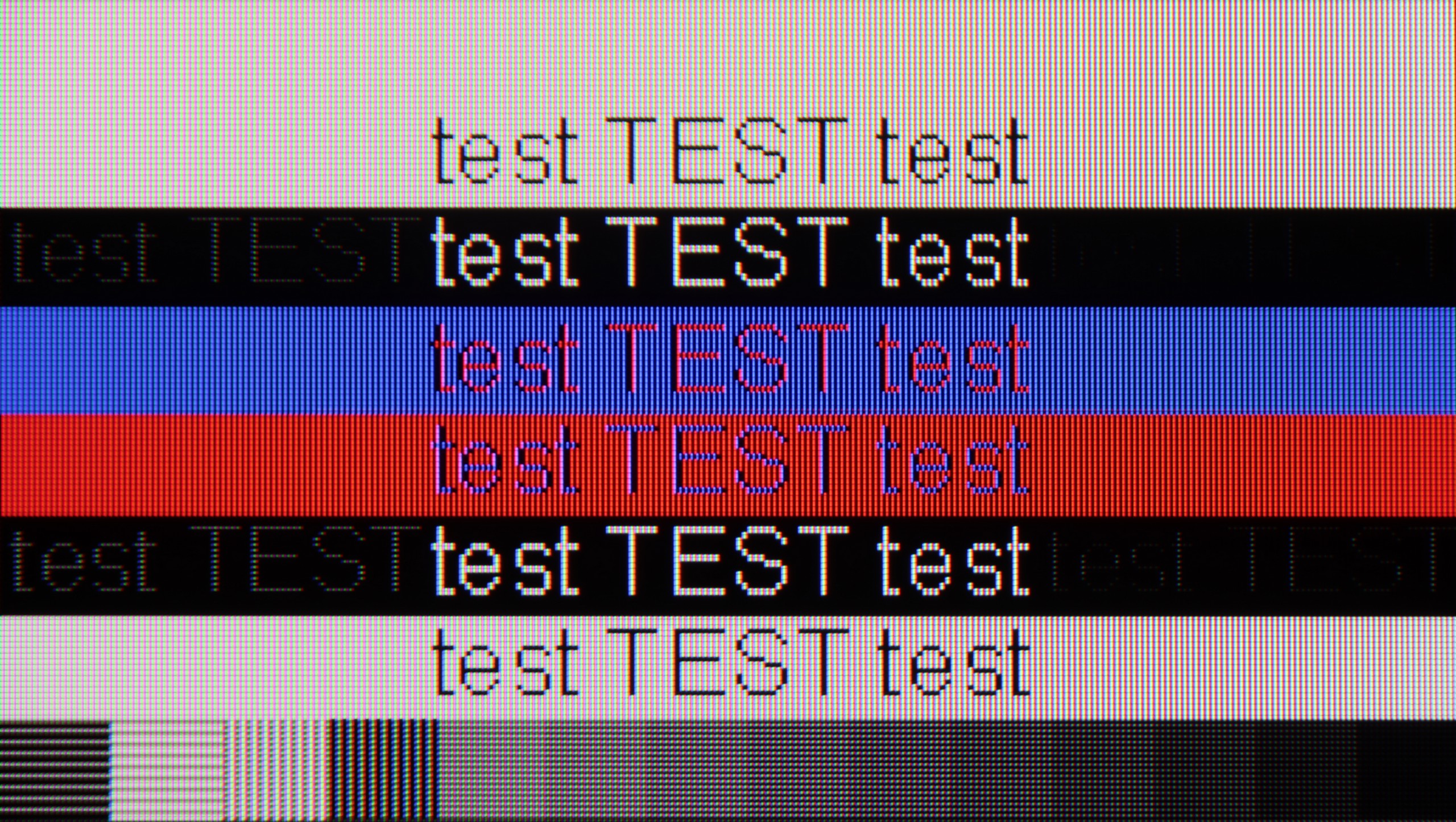
If you plan to connect the S85F to a computer, we have good news – this television is perfect for that. Low input lag and a 120 Hz panel make gaming on a PC pure pleasure. Whether we're talking about dynamic shooters or calmer RPGs, the response is instantaneous, and the fluidity of animations can keep you engaged for hours.
Of course, there’s no rose without thorns. Due to the diamond pixel arrangement in the QD-OLED panel, there is a slight “rainbow icon” effect, particularly noticeable when sitting close to the screen. Fortunately, this is more of a detail that most of you won’t mind in everyday use. Especially since, thanks to the proper implementation of chroma 4:4:4, the readability of fonts is at a very good level – documents, websites, and text editors look just as they should.
Connecting The Frame Pro to a computer via a wired connection is basically no rocket science – it works as it should. The image is clear, the fonts look good, you can calmly handle everyday work in Word or Excel, and then launch a game and it’s still okay. The real fun begins when we use the wireless module. And this is where the entire paradox of this television comes out again – a solution that was supposed to make life easier in theory can actually make it quite frustrating in practice. It's not just about the aforementioned delays, which can be immediately felt when using the mouse, but also about the clarity of the image itself. The fonts start to look simply worse, at times you can see some kind of delicate stripes, and the letters lose sharpness, and suddenly working with text becomes simply exhausting. And it's really strange that such a simple thing as displaying letters on the screen can fall apart because of the wireless module. So if someone plans to use The Frame Pro with a computer – whether for work or gaming – it’s really worth connecting it via a wired connection right away. Because otherwise, you can become very quickly frustrated, and instead of enjoying the large screen, you’ll feel like your eyes are fighting with the television for every paragraph of text.
Viewing angles
9.8/10
3.1/10
Here, dear readers, the S85F reaches absolute heights. The viewing angles are phenomenal – some of the best you can get in a television today, thanks to the unique QD-OLED panel from Samsung Display. Of course, WOLED panels can also maintain a high standard in this regard, but let's not kid ourselves – what QD-OLED shows in the S85F is even more impressive. Colors, contrast, and brightness remain practically unchanged even when watching the screen from a very large angle. This is the kind of television where you don't have to fight for the "best spot on the couch" – everyone will see the picture in all its glory, no matter where they sit.
The Frame Pro uses a VA panel, and that immediately means that viewing angles are not one of its strengths. It’s enough to sit slightly to the side to see how the screen starts to lose quality – brightness decreases, colors fade, and blacks that look solid from a central perspective suddenly resemble more dark gray velvet than deep pitch. This is most apparent at about a 40–45 degree angle – there, the image clearly brightens, and color saturation drops significantly. Overall, this is nothing new, as most LCD televisions with VA panels behave this way. At the cost of better blacks compared to IPS panels, we get worse viewing angles.
TV efficiency during daytime
5.1/10
7/10
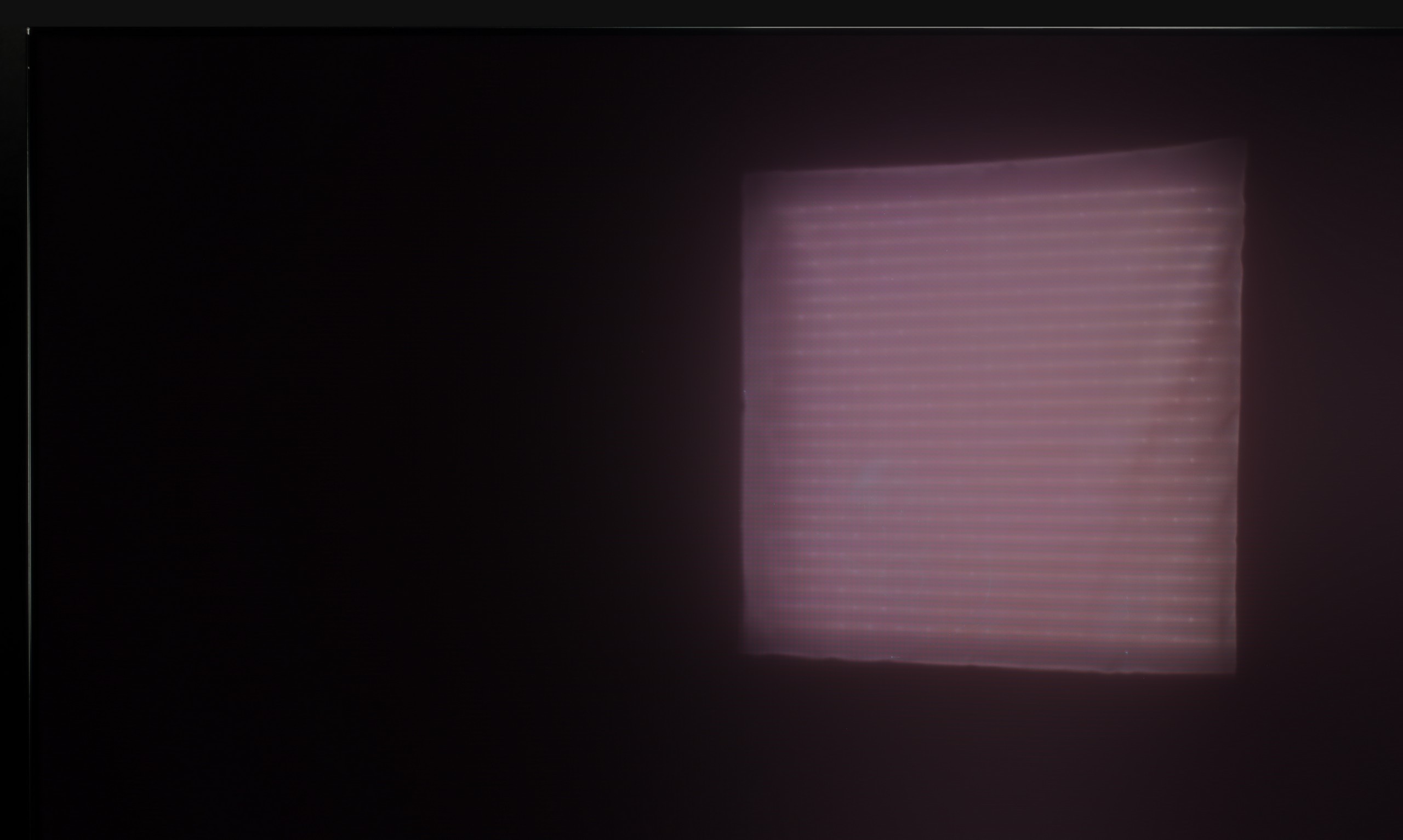
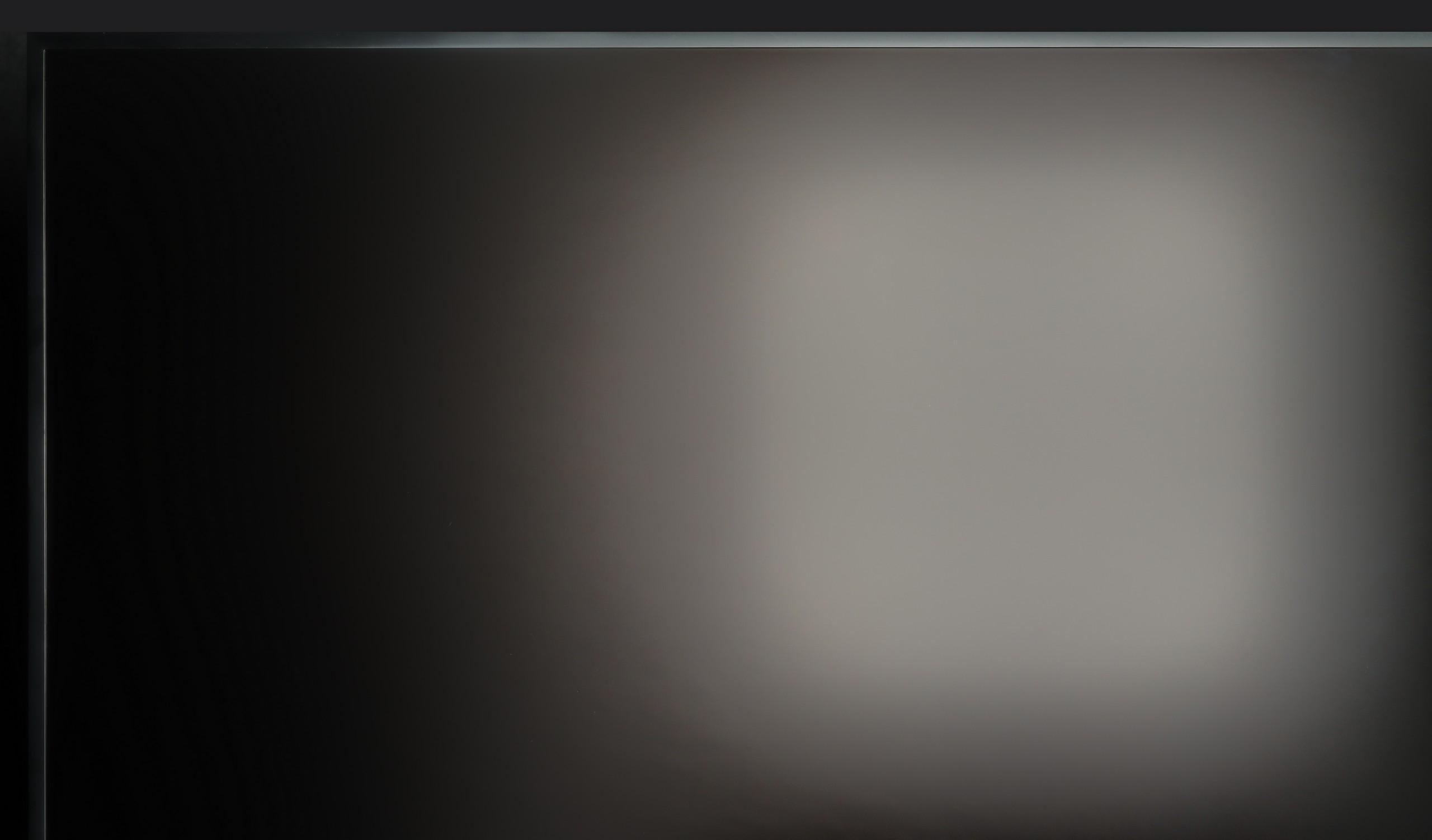


Matrix brightness
Average luminance SDR
Samsung The Frame Pro: 614 cd/m2
Samsung OLED S85F (QD-OLED): 317 cd/m2
We really liked the saying "there's no rose without thorns," and it perfectly fits the QD-OLED TVs. Especially when we take a look at their performance in heavily sunlit conditions. As you may notice, in very bright light, the panel's surface can take on a slightly cherry hue. The effect is subtle in the case of the S85F, but in extreme lighting conditions, black can perform a bit worse than in WOLED panels. But - and this "but" is key here - QD-OLED significantly better suppresses direct reflections of light. This means that reflections will be less bothersome, and the image will maintain clarity even when something bright reflects off the screen. You gain some, you lose some.
When it comes to brightness, the S85F is a moderately bright OLED. It's not a model made for extremely sunlit living rooms. If you plan to place it in a very bright room, we recommend considering shades or positioning it in a place that provides at least some protection from direct light.
The Frame series has stood out for almost a few years with its matte display coating, and The Frame Pro from 2025 is no exception. It is precisely because of this that you can be assured that light reflections will not annoy you even in a brightly lit living room. Samsung has refined this technology to near perfection over the years, and today, it can confidently be said that this is the best matte display we can find in televisions. Colors still look good and do not drastically lose saturation, as is the case with cheaper, Chinese designs. Black also remains at a decent level, although it must be admitted that in extremely bright lighting conditions, colors may slightly flatten and lose depth. However, this is a small price to pay for the complete lack of reflections on the screen – and this can be priceless in everyday use. Plus, the brightness must also be noted – about 600 nits in SDR mode makes the picture easily cut through daylight, and it will look satisfactory in most rooms.
Details about the matrix
Subpixel Structure:
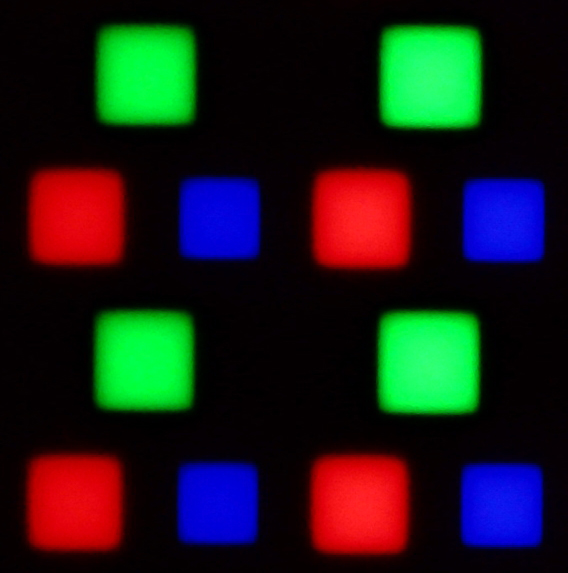
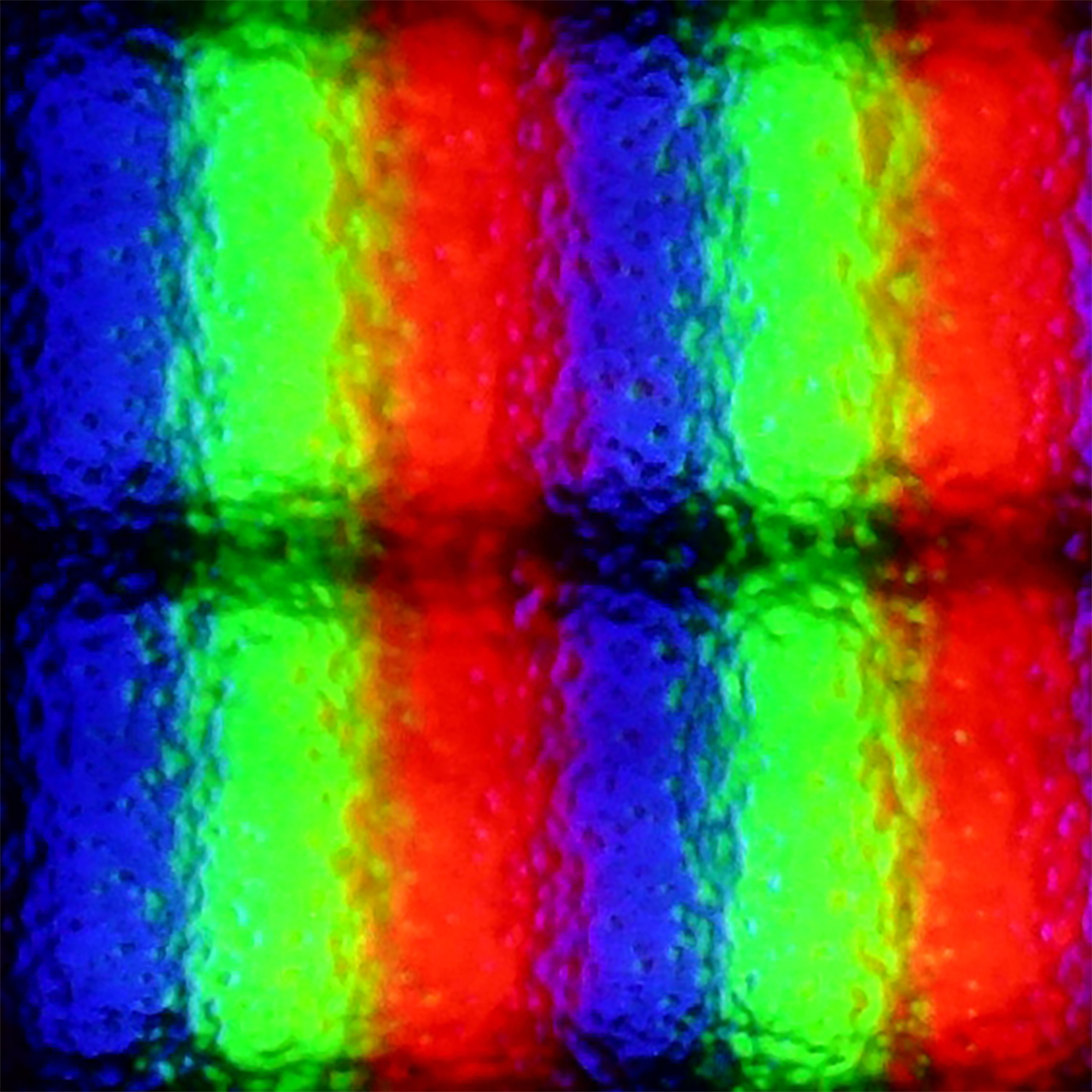
Panel uniformity and thermal imaging:

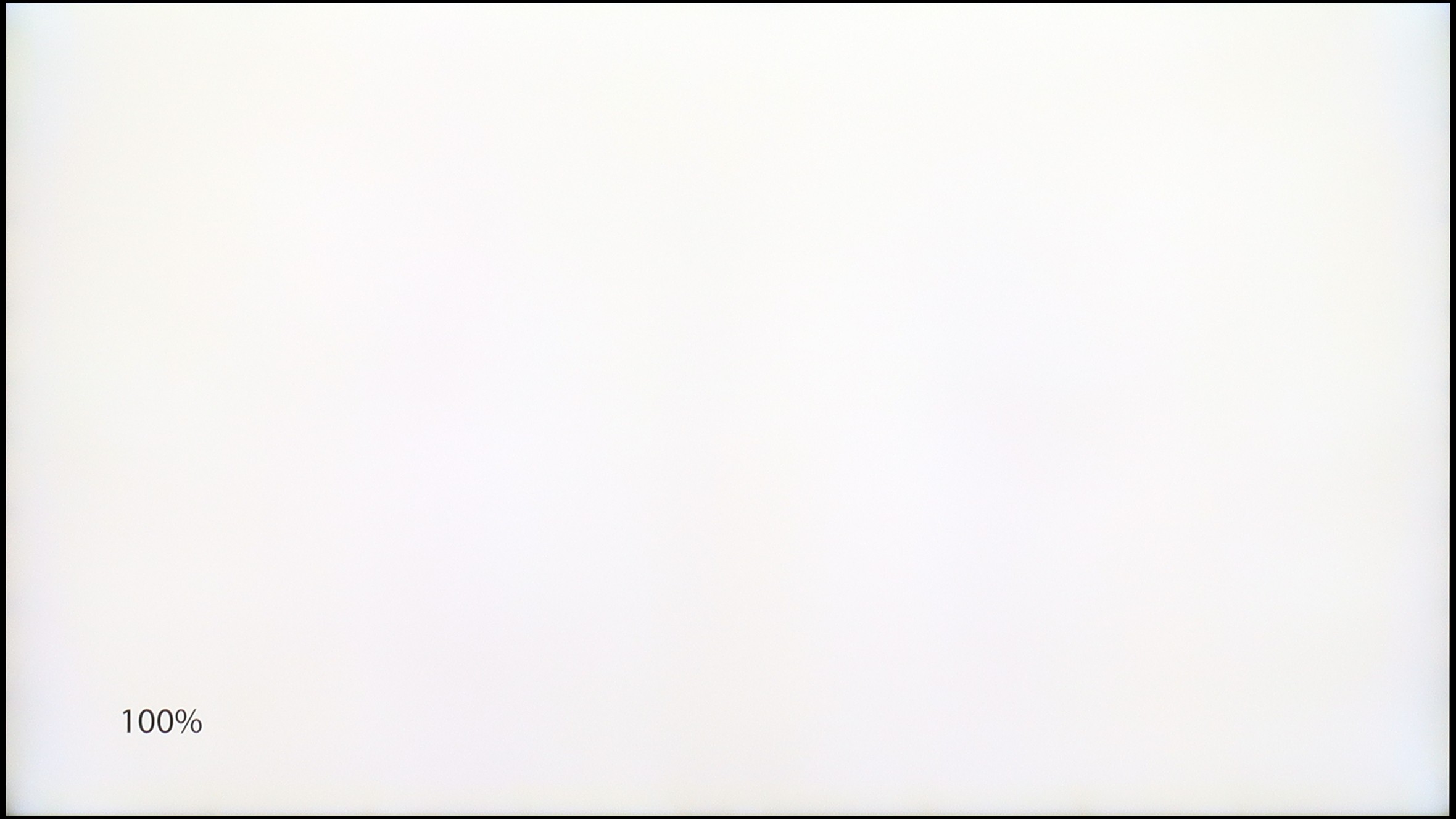
Samsung OLED S85F (QD-OLED)
Samsung The Frame Pro
TV features
7.3/10
7.7/10
- HDMI inputs0 x HDMI 2.0, 4 x HDMI 2.1 48Gbps0 x HDMI 2.0, 5 x HDMI 2.1 48Gbps
- Other inputsToslink (Optical audio)
- OutputsToslink (Optical audio), eARC (HDMI), ARC (HDMI)Toslink (Optical audio), eARC (HDMI), ARC (HDMI)
- Network InterfacesWi-Fi 2.4GHz, Wi-Fi 5GHz, Ethernet (LAN) 100MbpsWi-Fi 2.4GHz, Wi-Fi 5GHz, Ethernet (LAN) 100Mbps
- TV receptionDVB-T, DVB-T2, DVB-S, DVB-S2, DVB-CDVB-T, DVB-T2, DVB-S, DVB-S2, DVB-C
Classic features:
- Recording to USB (terrestrial TV)
- Recording programming
- Picture in Picture (PiP)
- RF remote control (no need to aim at the screen)
- Backlit remote control
- Teletext
- Audio only mode
- Bluetooth headphones support
- Simultaneous Bluetooth headphones & TV audio
Smart features:
- AirPlay
- Screen mirroring (Windows Miracast)
- Voice search
- Voice search in native language
- Ability to connect a keyboard and mouse
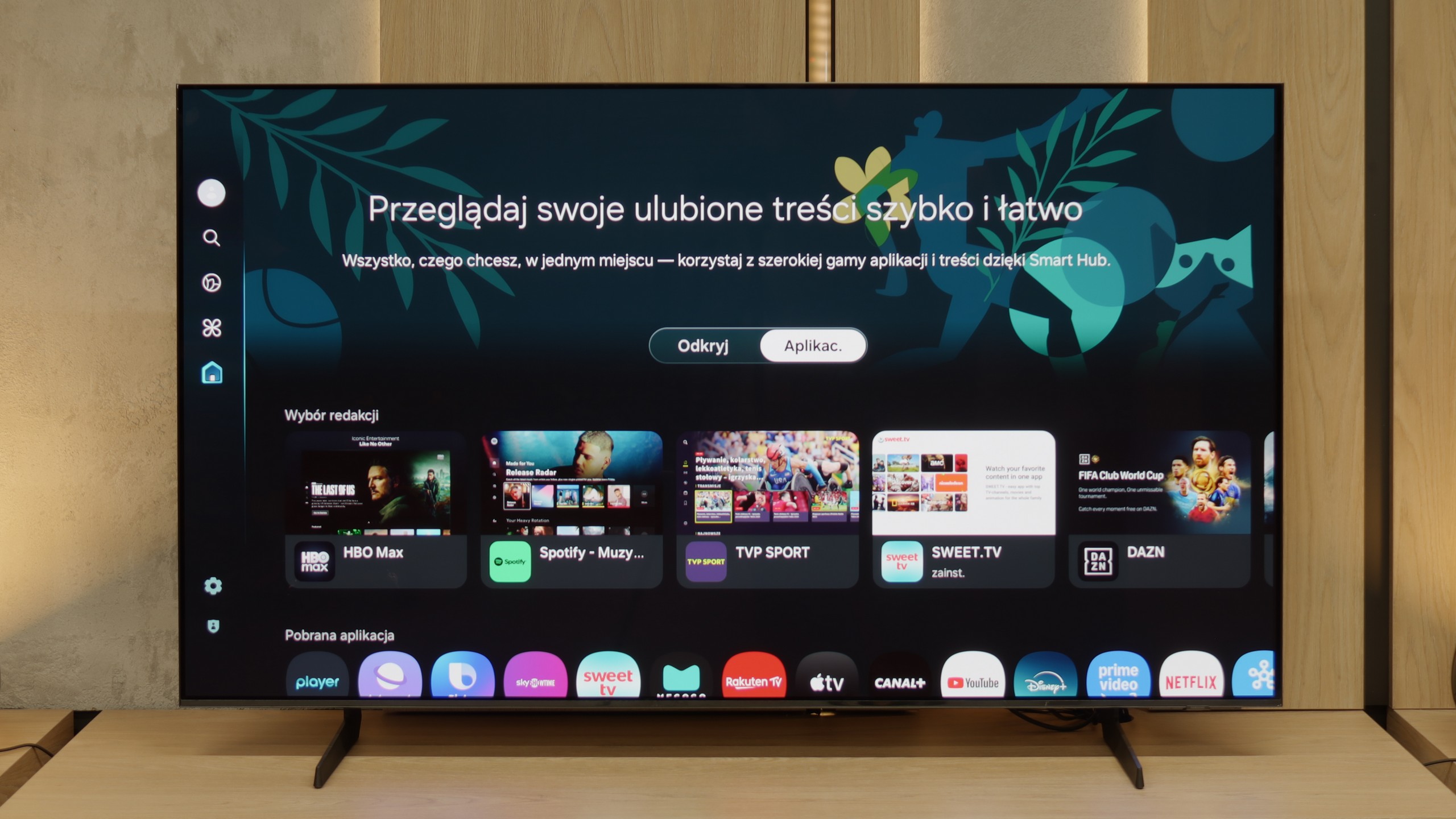
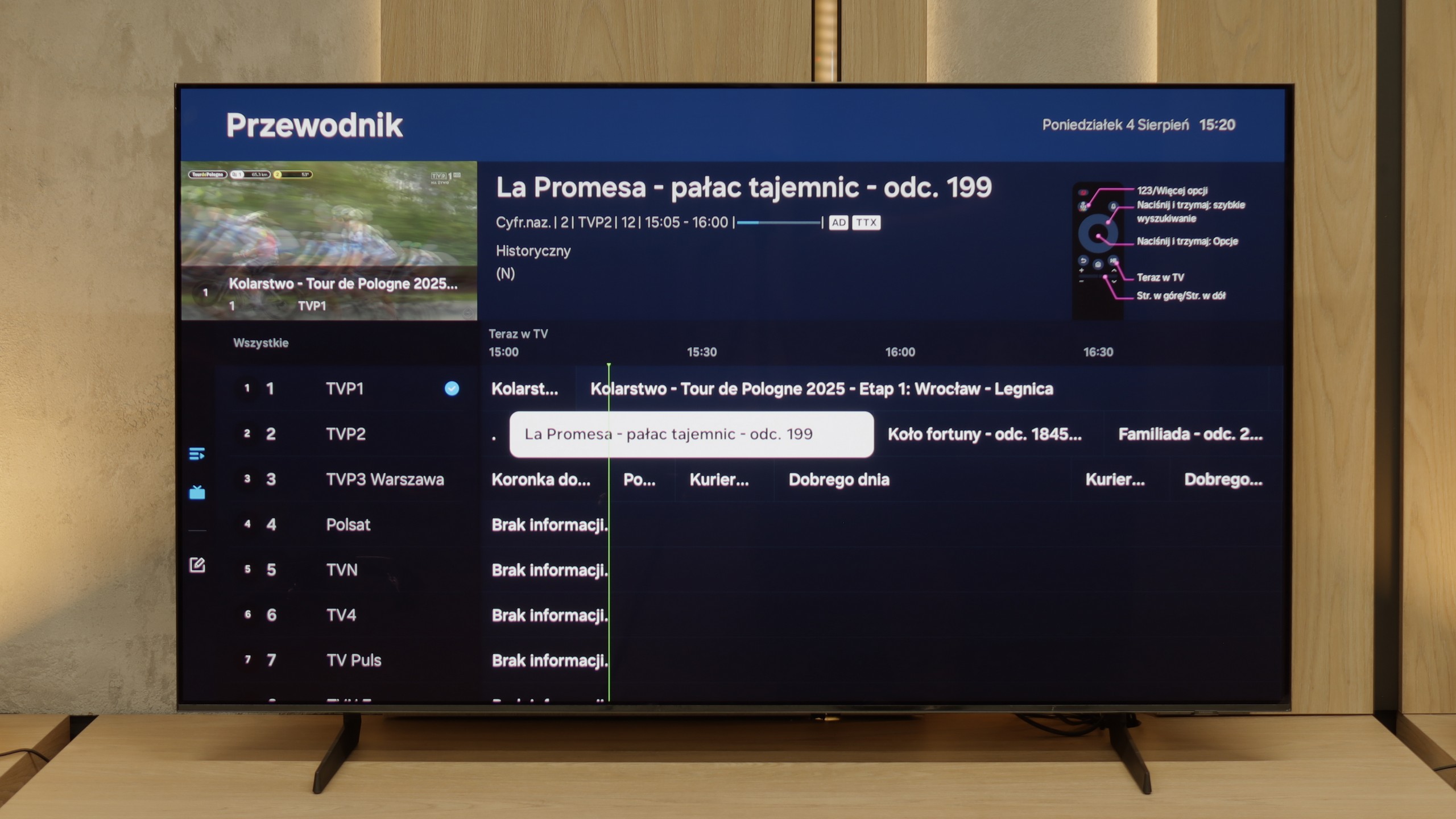
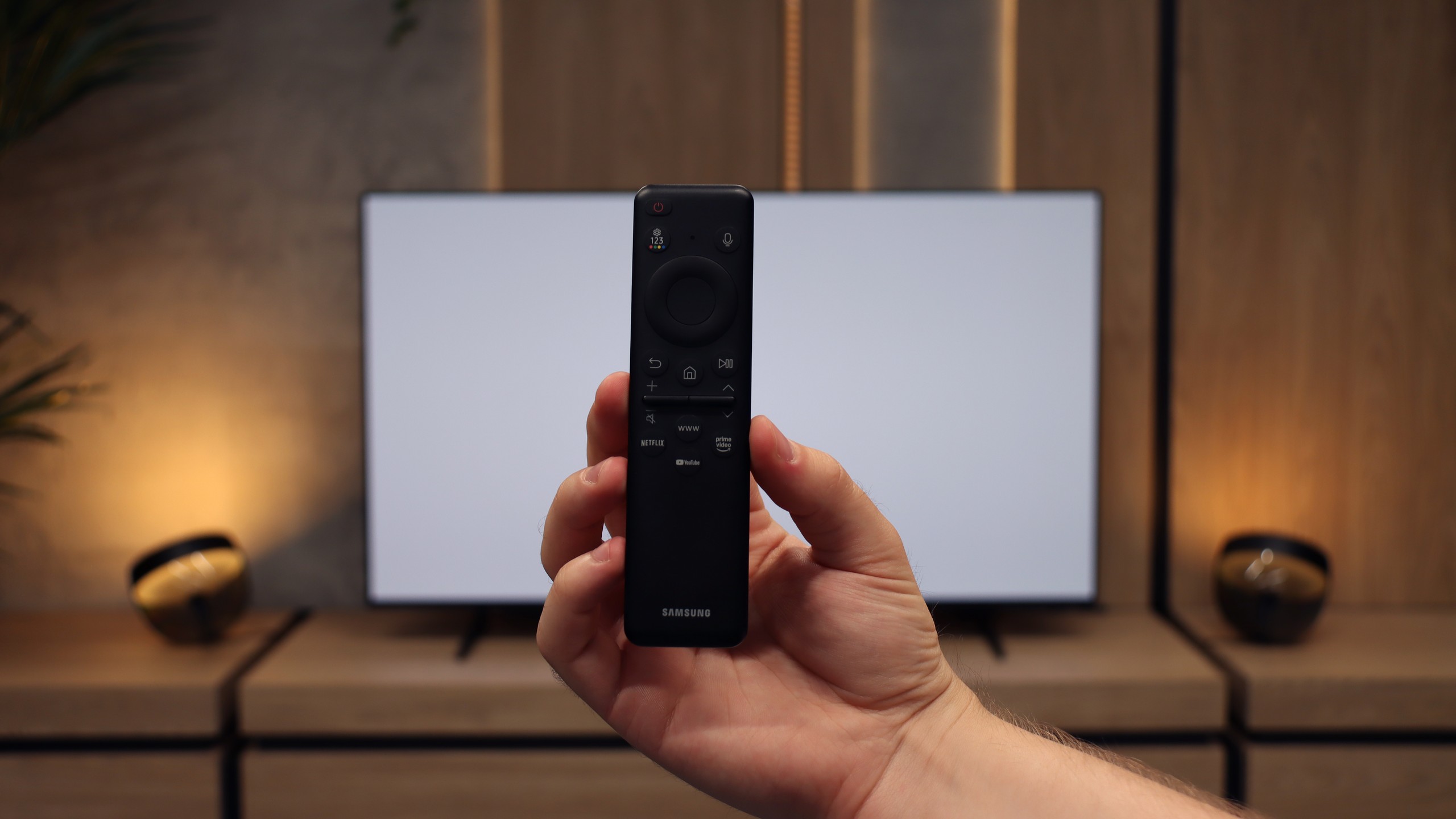
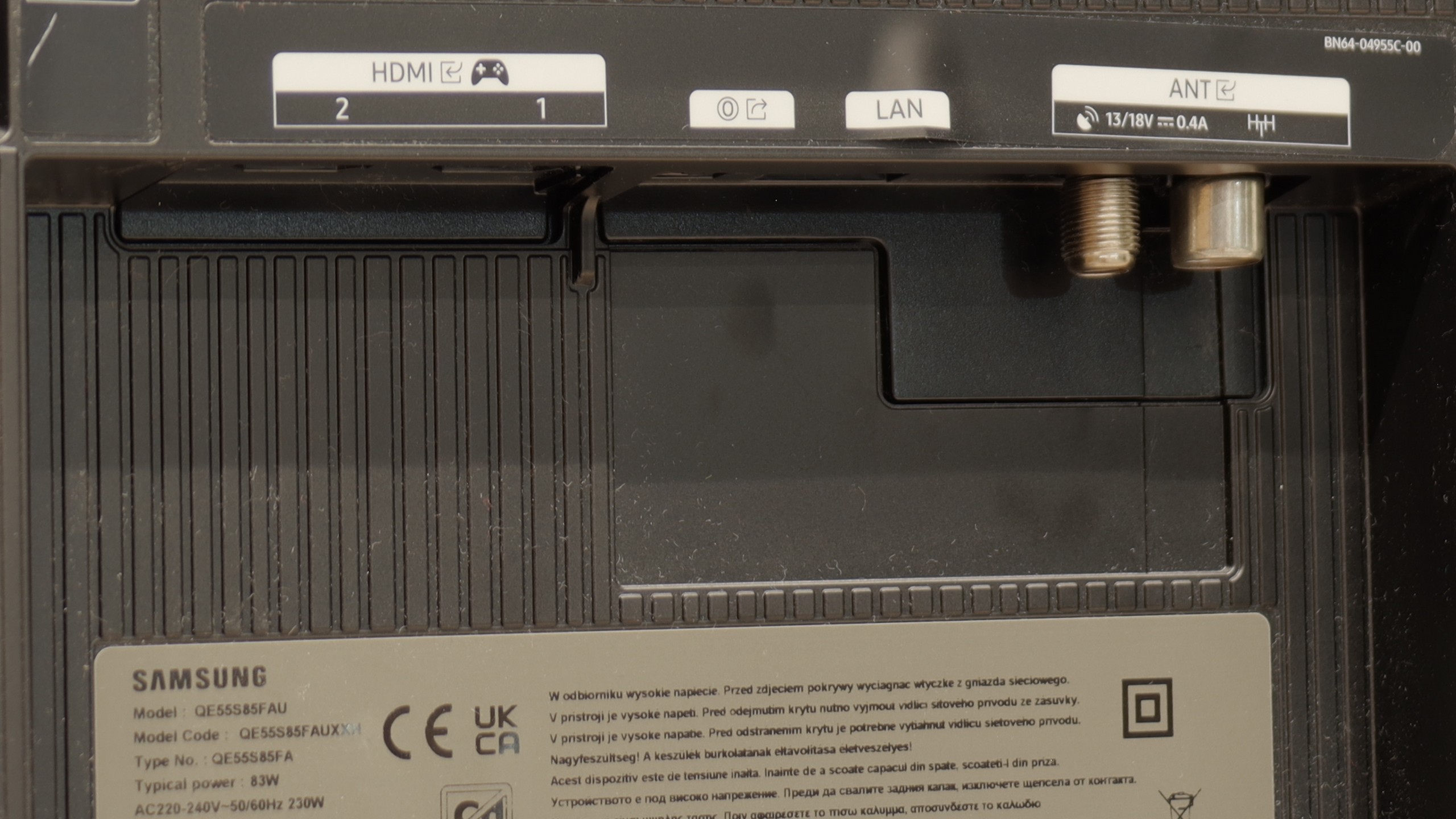
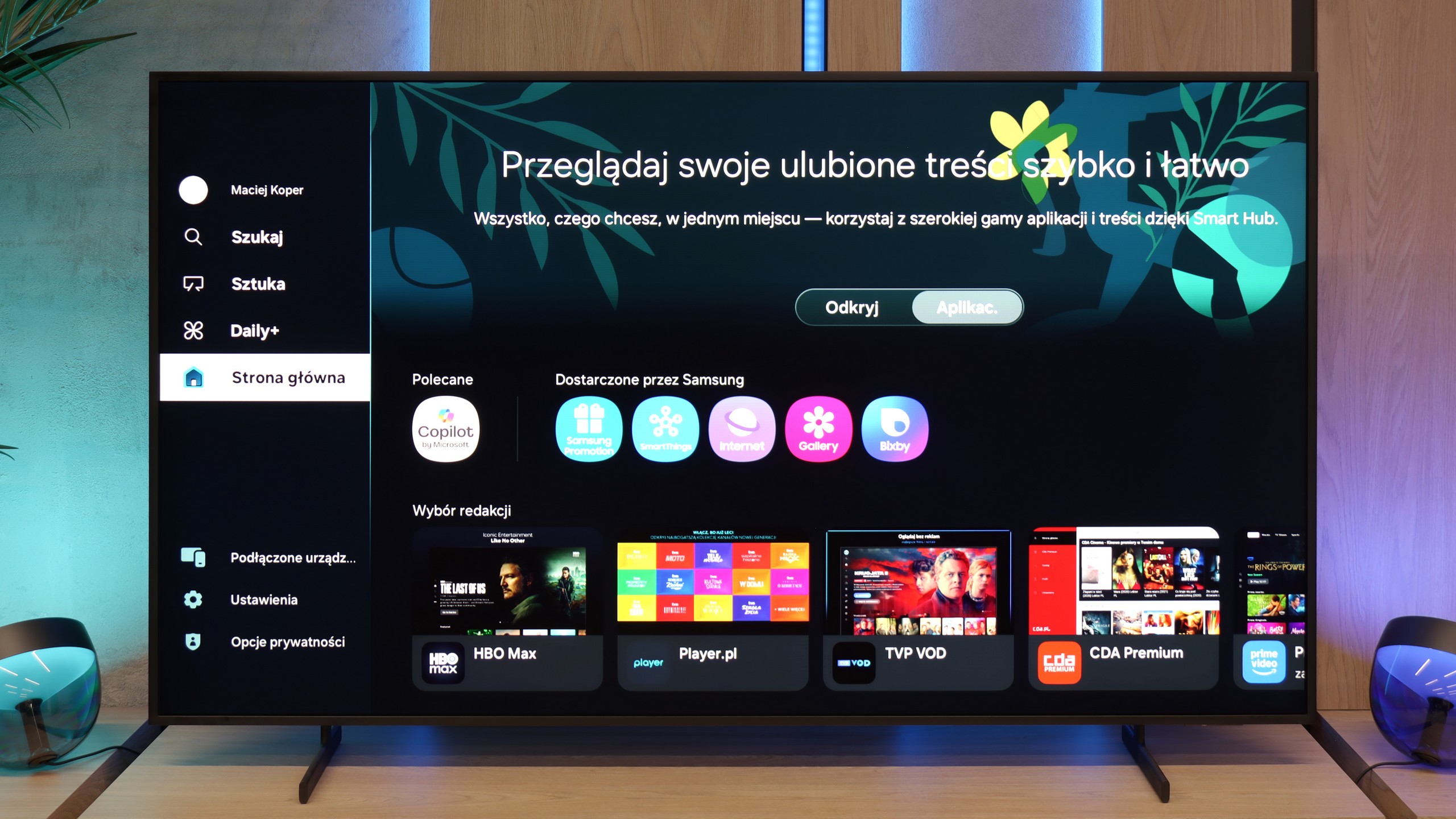
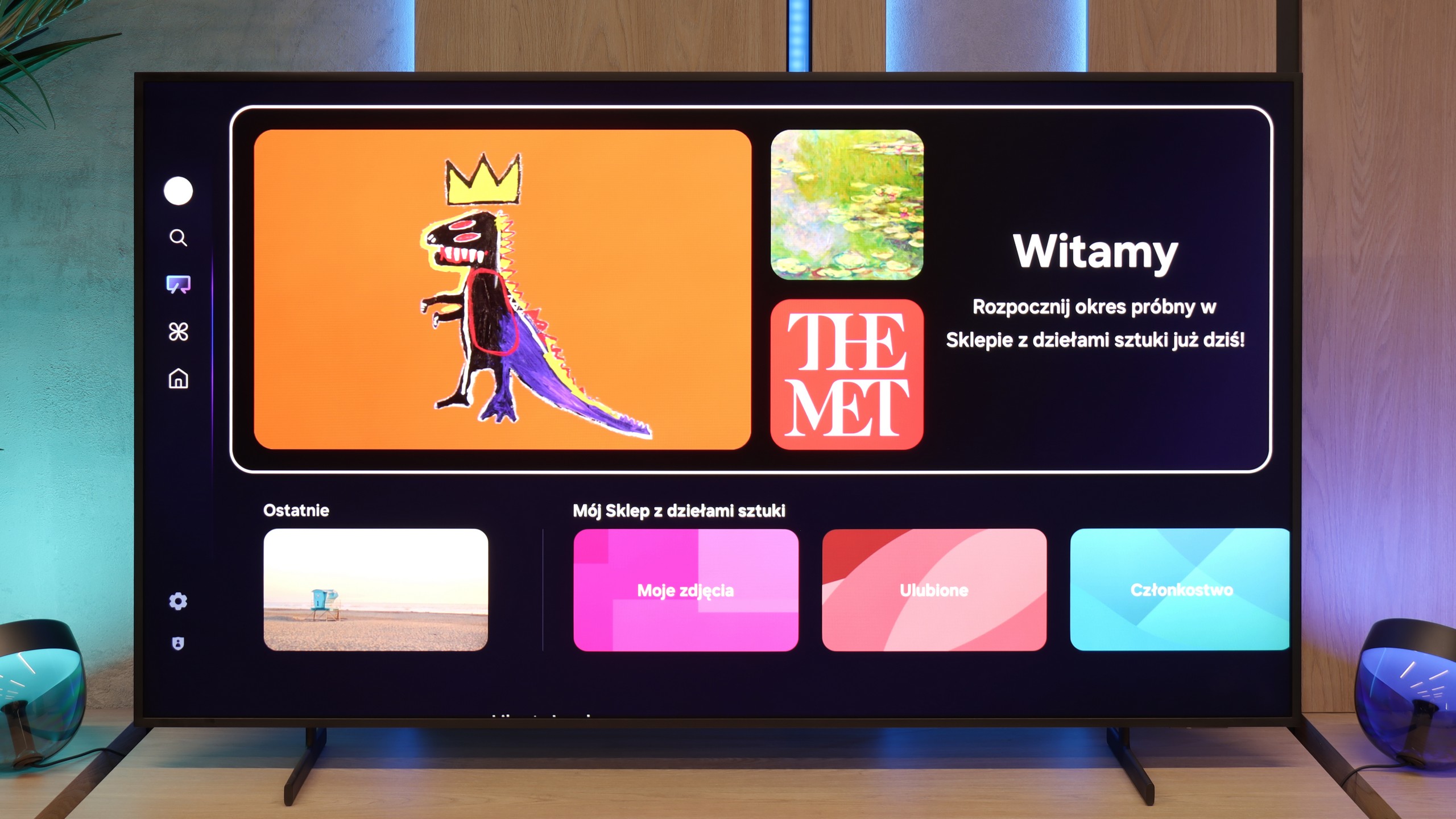
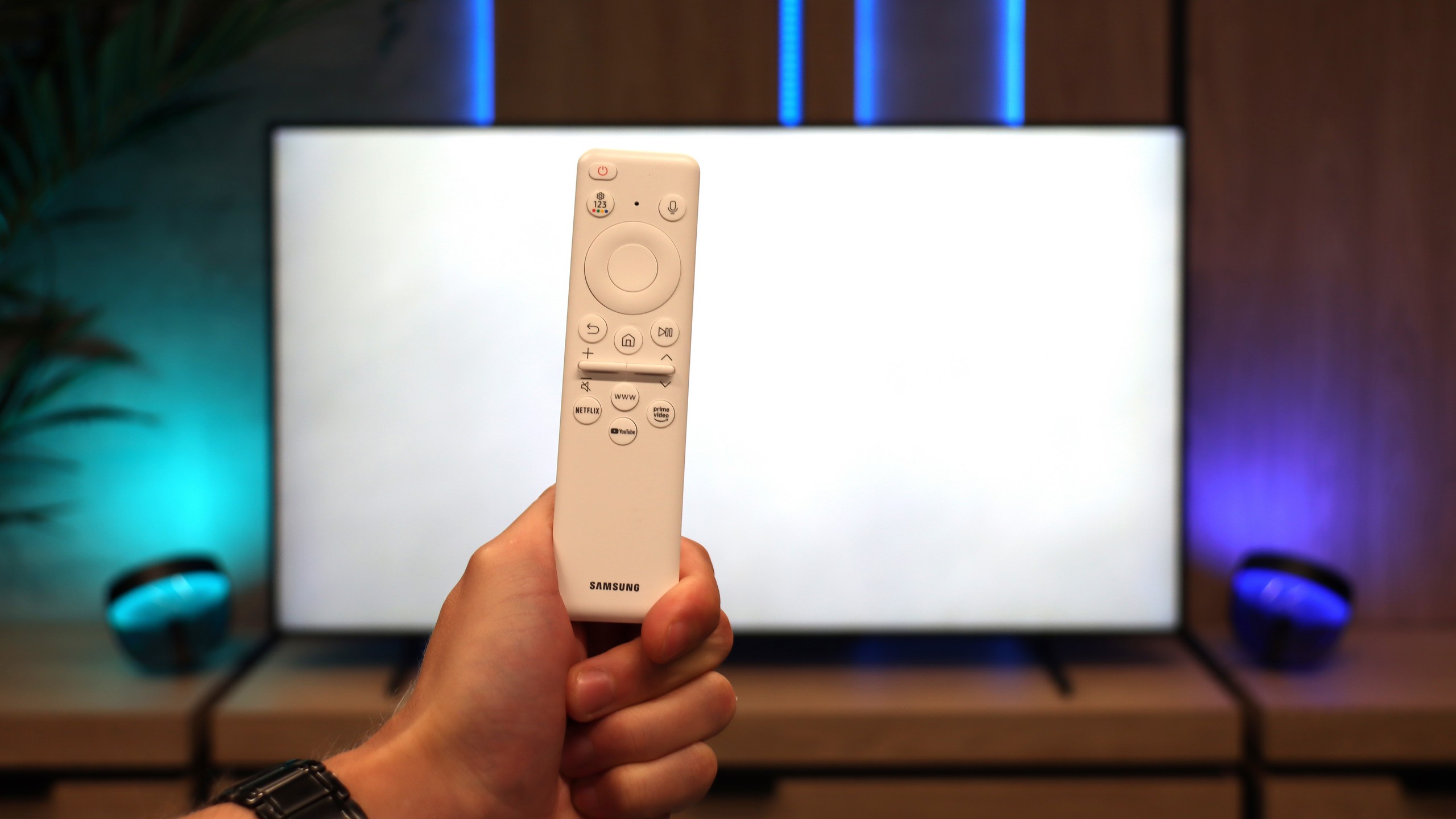
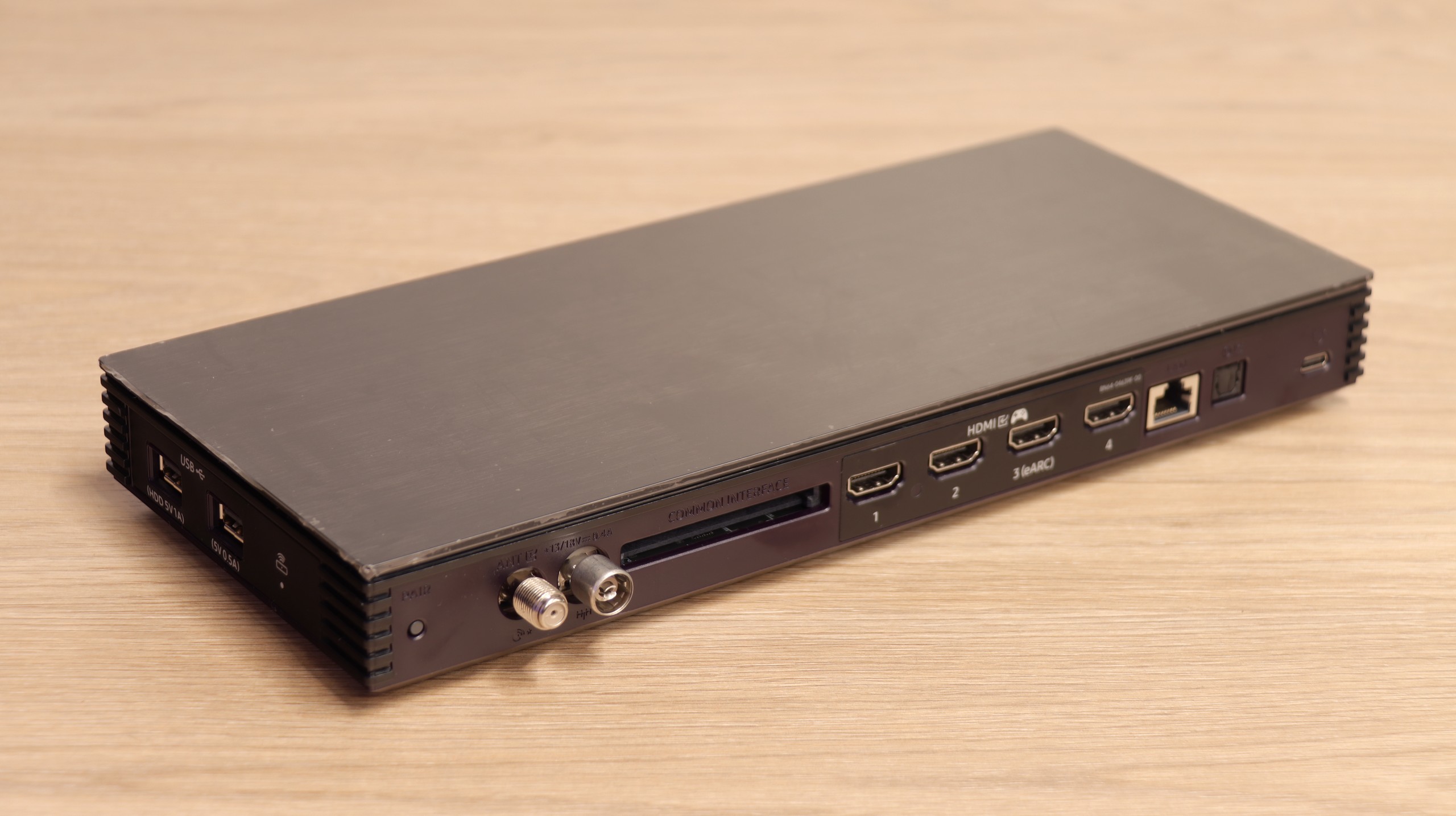
Features of the Classic S85F TV
The S85F was not really designed with fans of classic television in mind. We won’t find PiP functionality here (which is a bit surprising, because Samsung usually offers it) nor the ability to record programs to USB from the built-in tuners. Fortunately, the basics are present – teletext and a clear channel guide – so this is more than enough for regular, everyday viewing. The included remote, although simple at first glance and lacking a numeric keypad, allows for the control of multiple devices. This means that when connecting, for example, a Canal+ decoder, you don’t need to have two remotes on the table – the one from the television is sufficient.
SmartTV S85F: Tizen
The smart part is a completely different story. Tizen is one of the most advanced operating systems in televisions. It works efficiently, supports all popular internet functions – from screen mirroring, through AirPlay, to voice search. The strongest aspect of Tizen is its integration with the SmartThings app, which can act as a control center for the entire home. Of course, like any closed system, Tizen has its limitations – for instance, a smaller application library compared to GoogleTV. However, looking at the current list of available applications, it’s hard to pinpoint anything that might actually be lacking.
Smart Features
Samsung The Frame Pro runs on the Tizen system, which has been the hallmark of the Korean manufacturer for years. It is one of the most refined smart TV environments – fast, stable, and intuitive. It virtually includes all popular streaming applications, and the interface operates smoothly and without significant delays. Features such as AirPlay 2, screen mirroring, and voice control of the TV using Bixby, Alexa, or Google Assistant are also supported.
TV Functions
When it comes to classic TV functions – as in almost every Samsung – this is not the device's strongest aspect. We receive a clear EPG guide, teletext support, the ability to connect headphones via Bluetooth, and that's about it. We won't find more advanced tools known from TVs (e.g., USB recording or PiP). However, this is standard in Samsung's offering. The manufacturer has been setting trends for several years and focuses mainly on smart features, while traditional television is somewhat neglected.
Art Store and Interchangeable Frames – A Unique Element of the Series
What has distinguished the series The Frame since its inception is the Art Mode and the Art Store application. Thanks to it, we can display reproductions of artworks on the screen, ranging from classics to modern graphics. The service is indeed paid (in the form of a subscription or a one-time annual fee), but it ensures that the materials are prepared in the highest quality, making the displayed images look almost as if painted. This element, along with the option to change the TV's frames, makes The Frame Pro serve a dual purpose as a television and a stylish interior design element.
Wireless One Connect Module
The second unique element of The Frame PRO is the wireless One Connect module, which includes all HDMI ports and other connections. This allows the TV to hang on the wall almost like a real painting, while all the electronics and cables can be placed in a separate box positioned even a few meters away. The device is powered via USB-C and takes over all the "thinking" processes of the TV. While this solution has its limitations for gamers or those using PCs (latency, deterioration in font quality), it works great for connecting amplifiers, decoders, or individual multimedia devices. It's a very "gadgety" solution, but in everyday use, it proves to be simply convenient and allows for better arrangement of space in the living room.
Playing files from USB
9.1/10
9.1/10
Supported photo formats:
Maximum photo resolution:
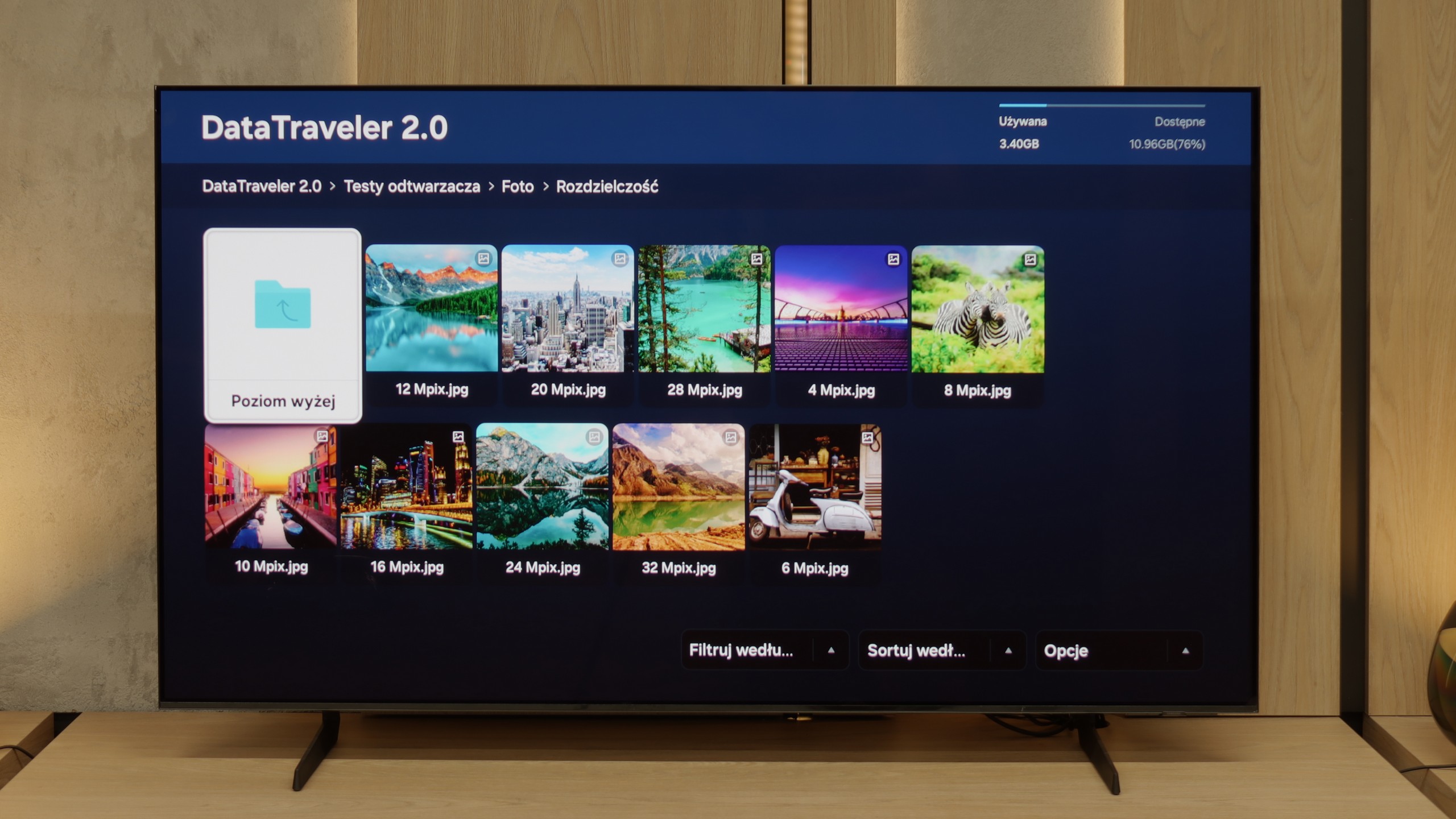
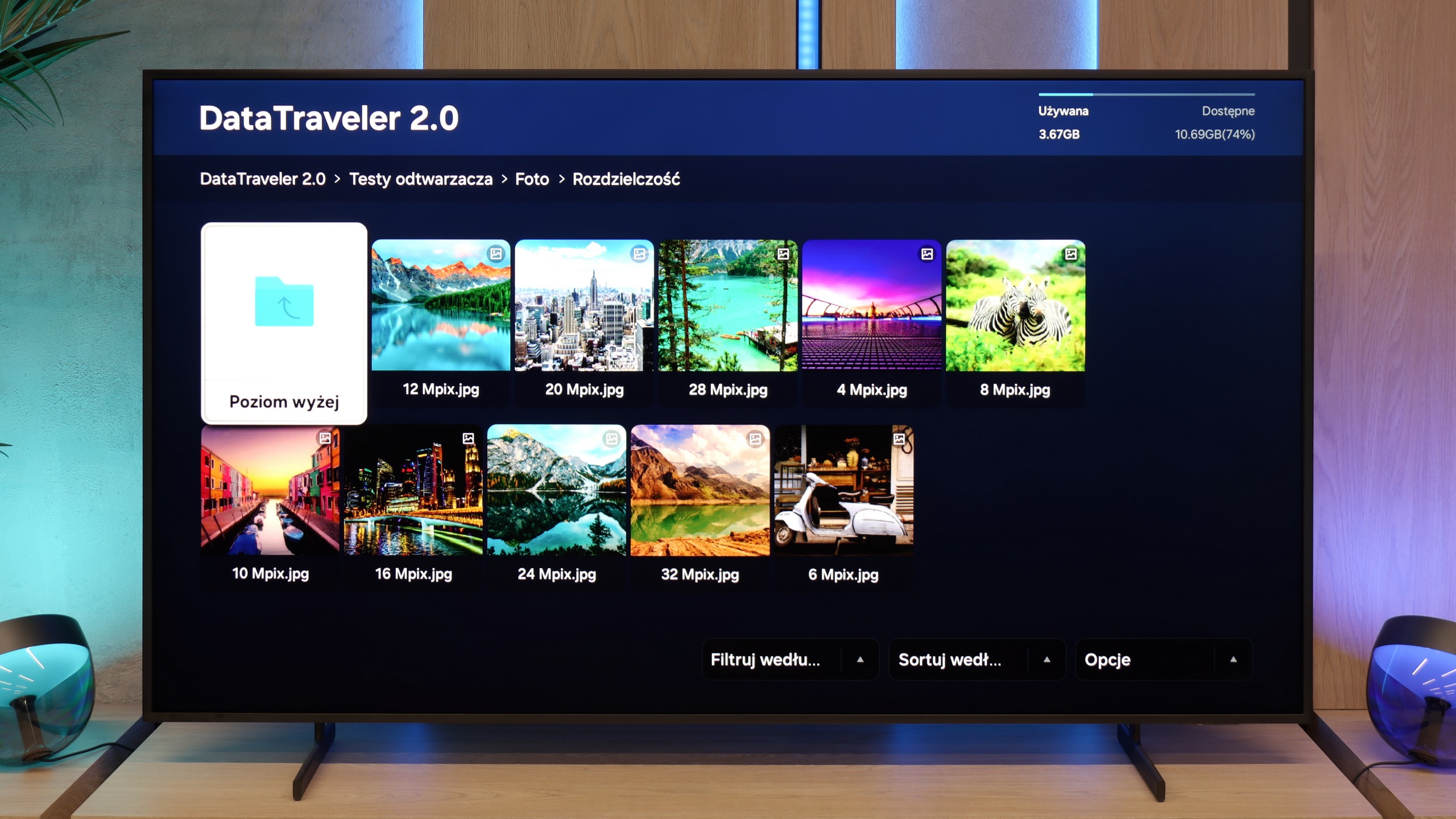
The built-in media player in the S85F performs excellently – almost everything you plug into a USB drive or disk will be played back without any issues. Minor gaps occur only with the support for some less common photo formats, but for the vast majority of you, this will be more than sufficient. So it can be confidently said that for home use, the built-in player is more than solid.
The Frame Pro handles multimedia playback from a USB drive correctly. Most popular movie, music, and photo formats work without major problems, and the TV manages them efficiently. During tests, we noticed only one inconvenience – files in HEIC format, which is a standard used by Apple, do not open even though the system sees them and displays them in the player. For those who often transfer photos from an iPhone, this may be a minor inconvenience, but apart from that, the player does its job well, and it's hard to have significant complaints about it.
Apps
8.7/10
8.7/10














































Sound
7.2/10
6.4/10
- Maximum volume80dB84dB
- Dolby Digital Plus 7.1
- Dolby True HD 7.1
- Dolby Atmos in Dolby Digital Plus (JOC)
- Dolby Atmos in Dolby True HD
- DTS:X in DTS-HD MA
- DTS-HD Master Audio
Built-in speakers with a power of 20 W on paper may not make a big impression, but in practice, the S85F can surprise. It sounds really pleasant, and at times, you can even catch a hint of bass, which is not a given in this class of speakers. The television does not support the DTS format, which unfortunately has become the standard for most manufacturers by 2025. A nice surprise, however, is the support for Dolby Atmos. Of course, talking about "spatial" sound in the case of two speakers placed at the bottom of the casing would be a bit of an exaggeration, but it's good that Samsung offers such a feature in this model at all.
The sound on The Frame Pro is not one of this TV's strongest features. Its slim design means there's virtually no bass, which makes the overall audio sound a bit flat and average. On the other hand, the TV plays loudly – it can easily fill a medium to larger room. Dialogues are clear, but when it comes to special effects or music, there’s a lack of depth. This is definitely a piece of equipment for which it's worth buying a soundbar, preferably from the designer Samsung S series. Thanks to decorative frames, it can be matched to the decor alongside ChooseTV.
Sound Quality Test
No sound test video
Acoustic Measurements
80dBC (Max)
75dBC
84dBC (Max)
75dBC


